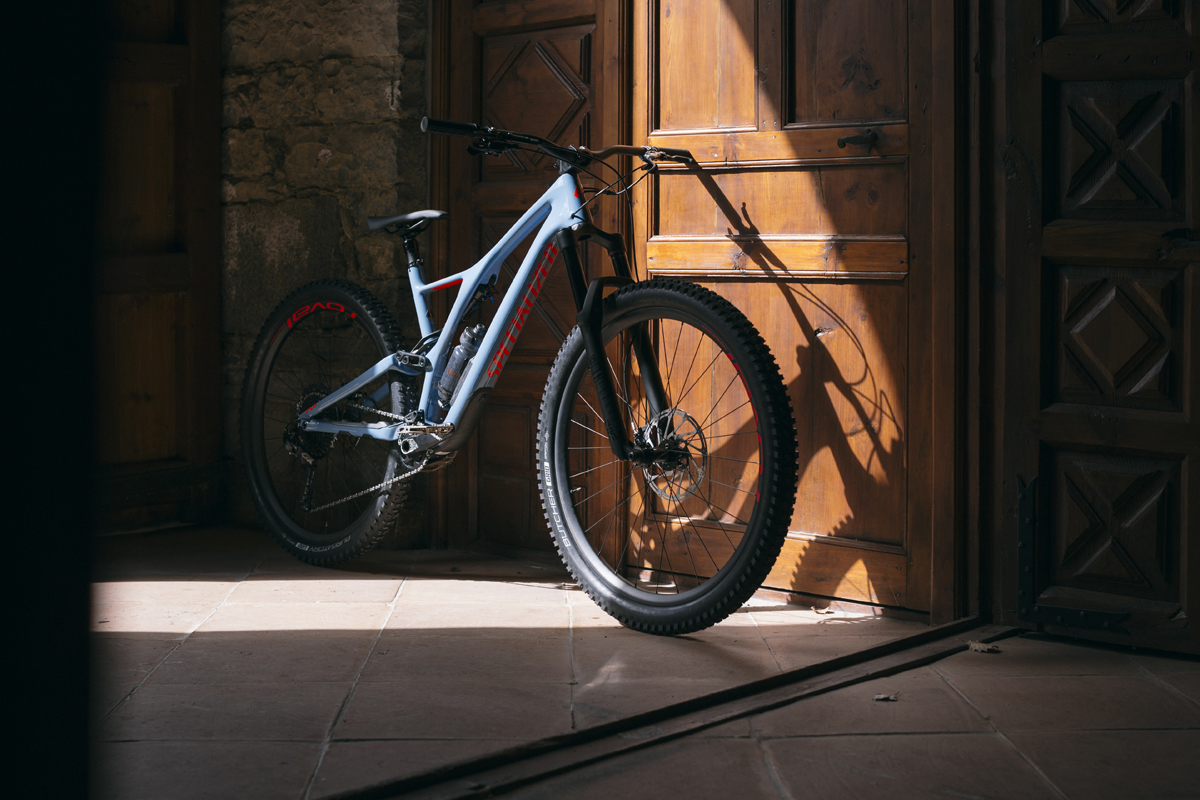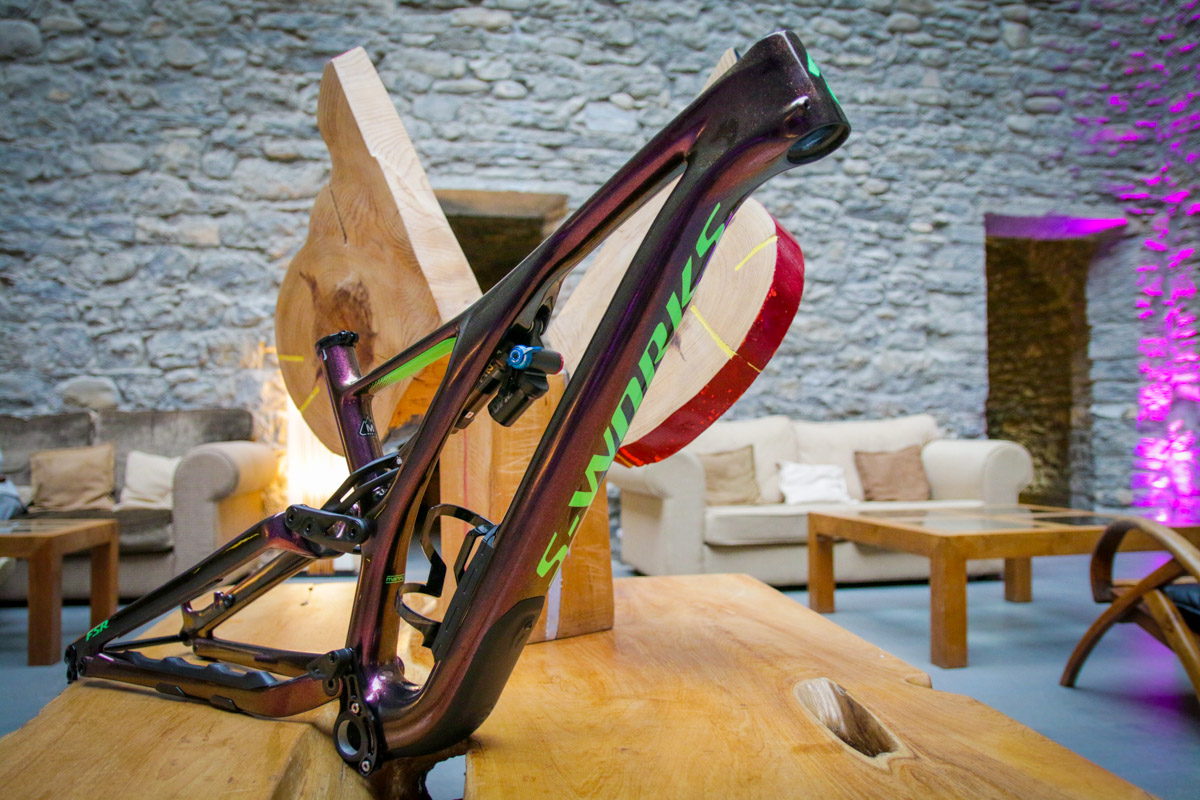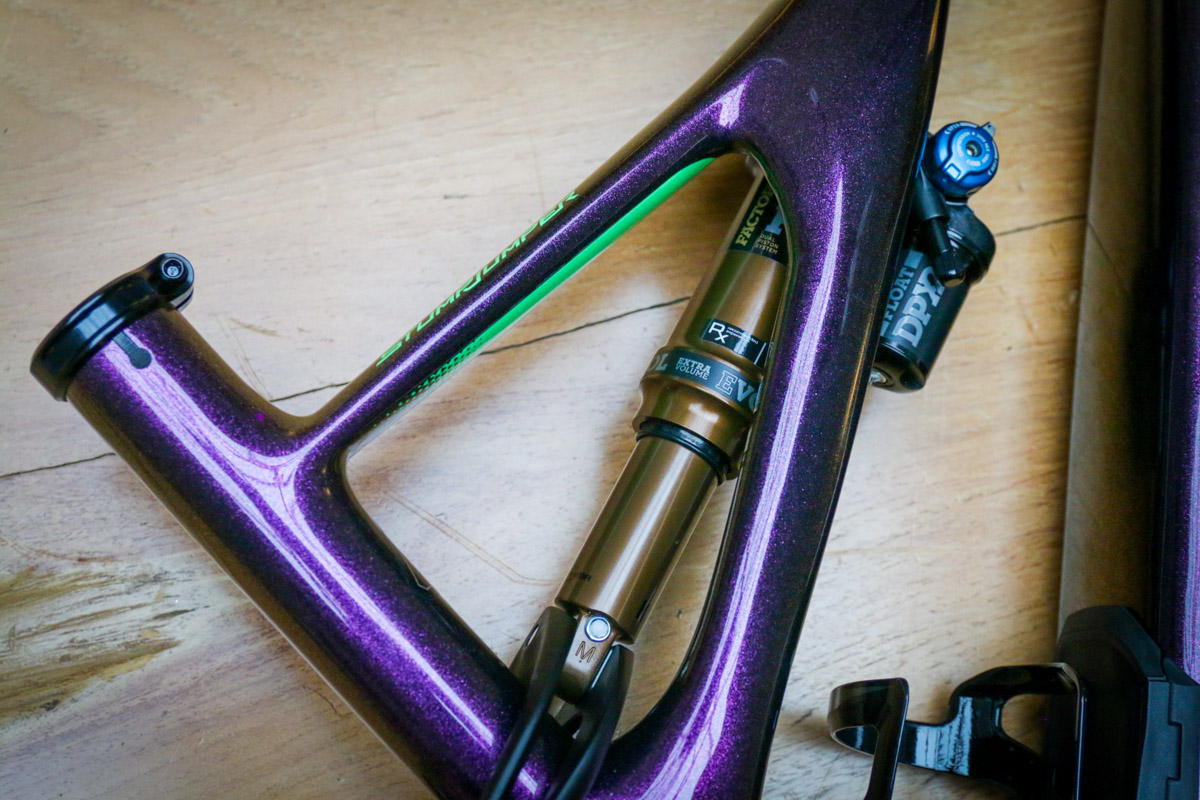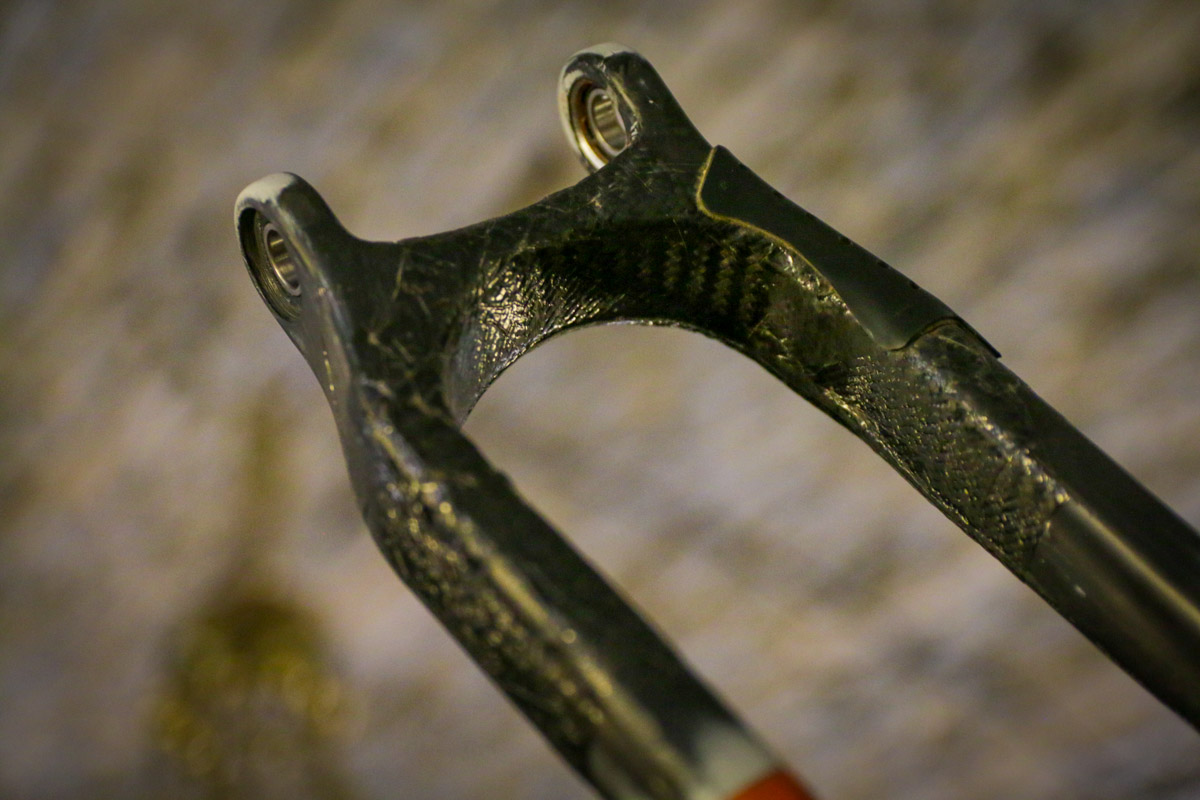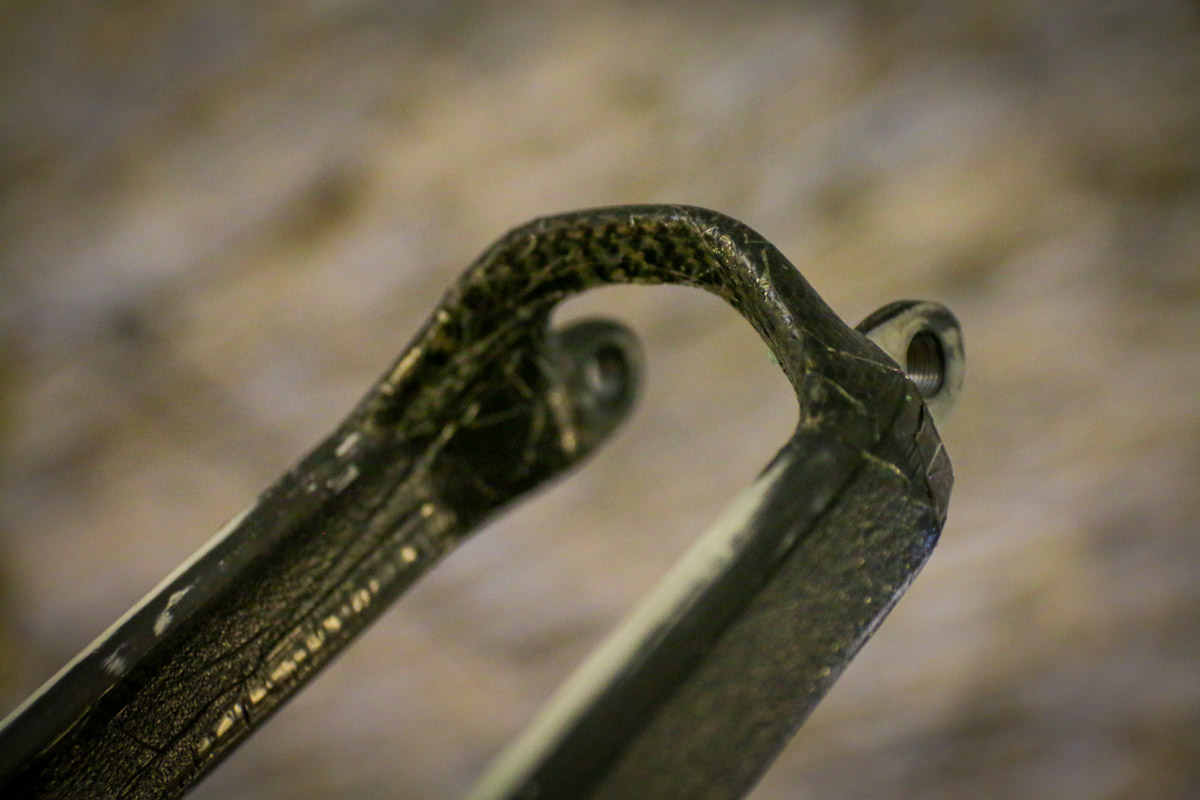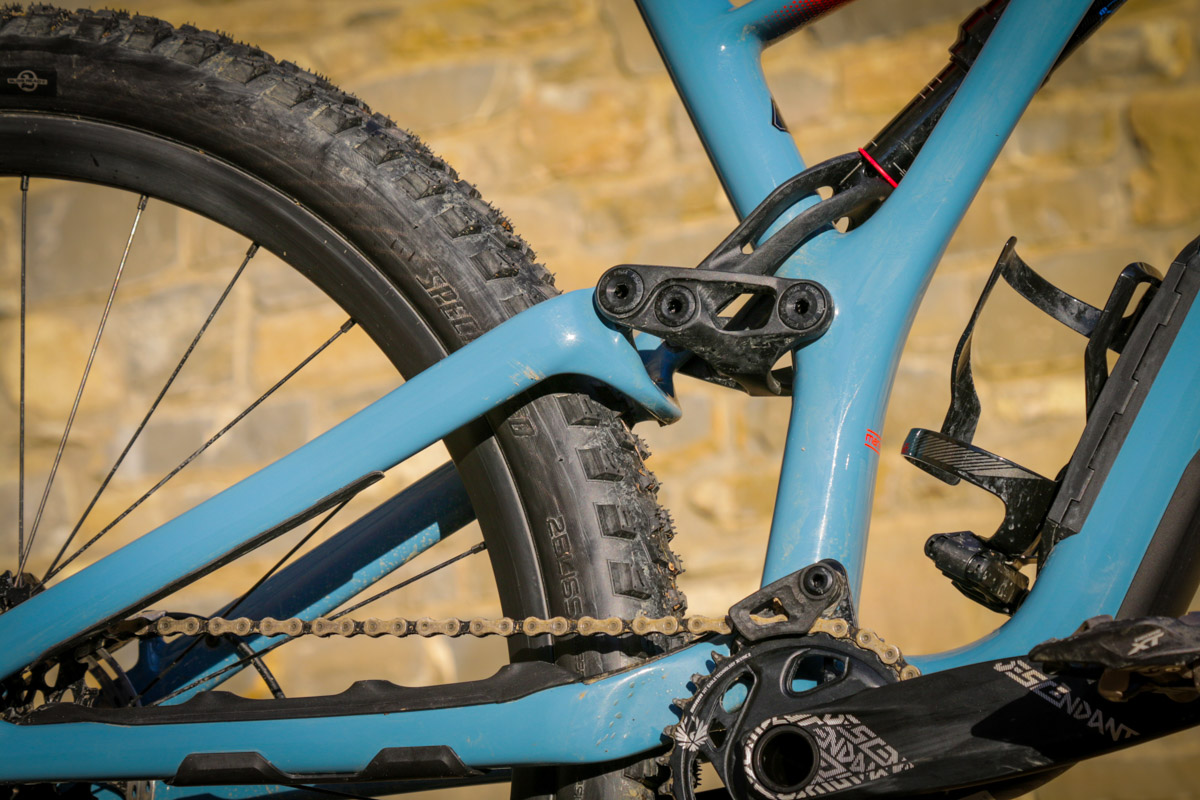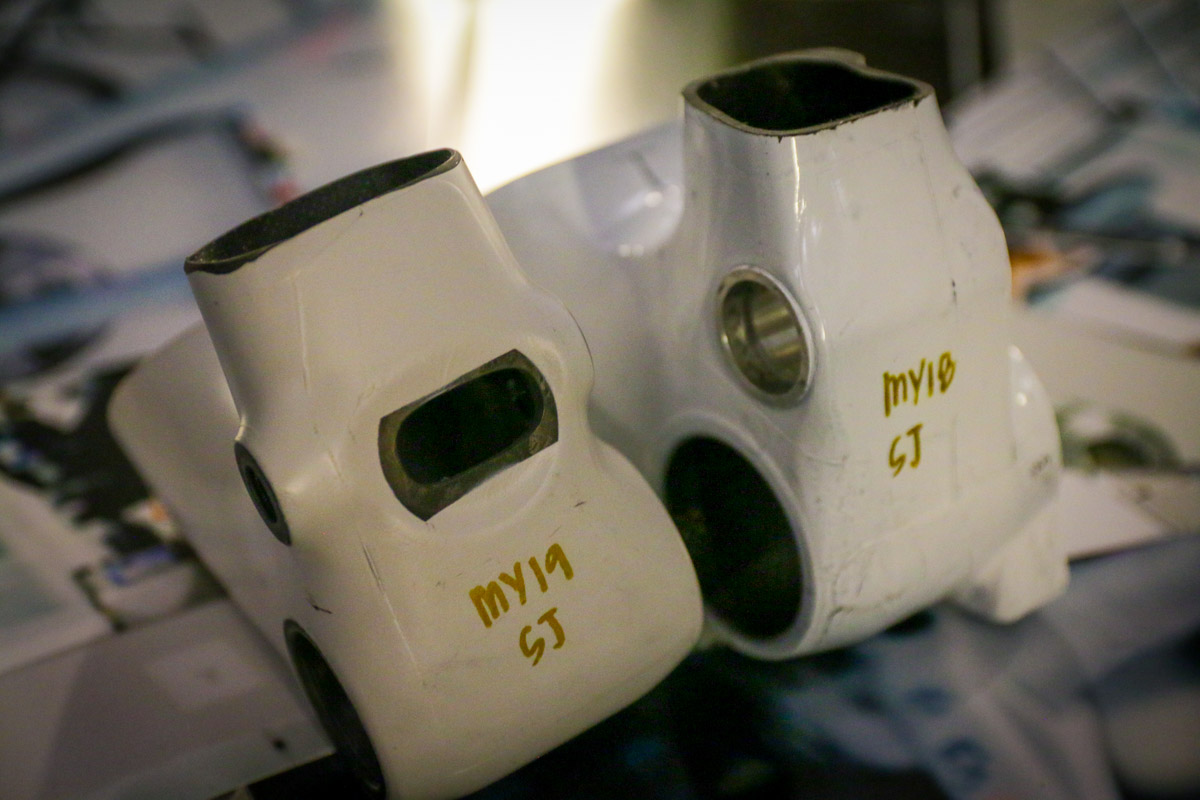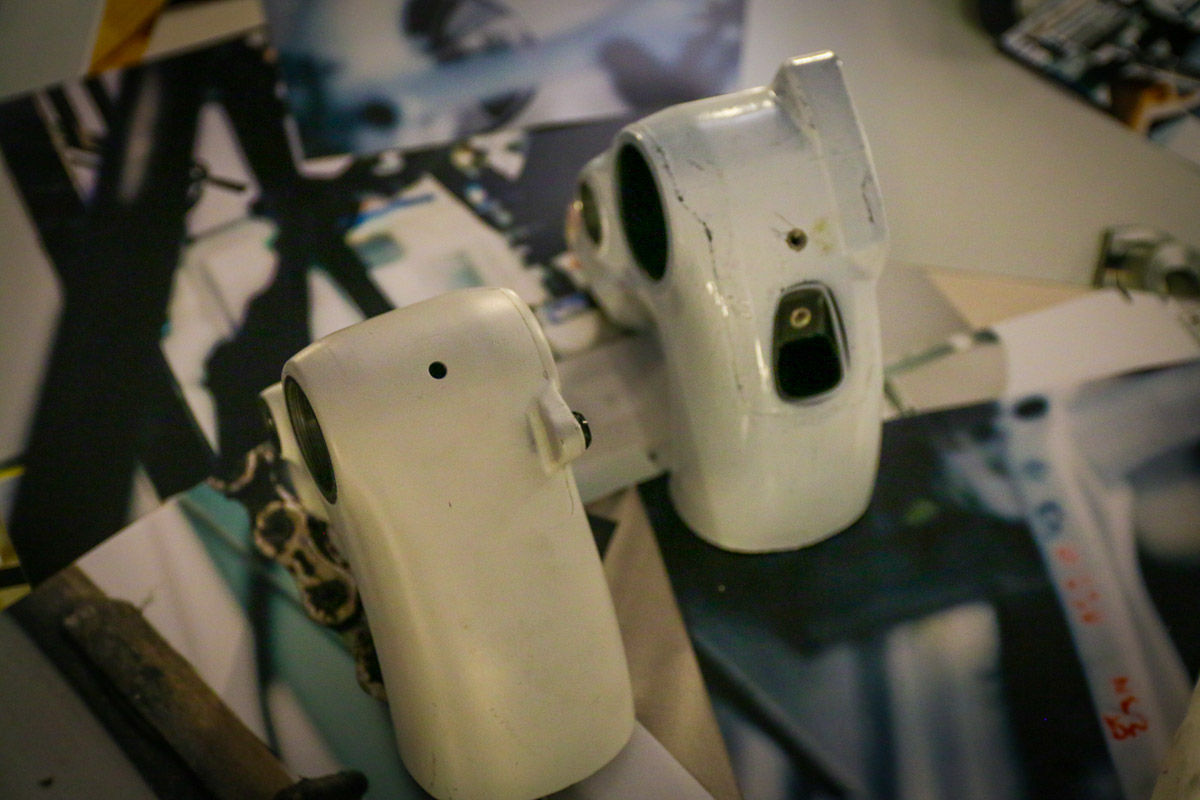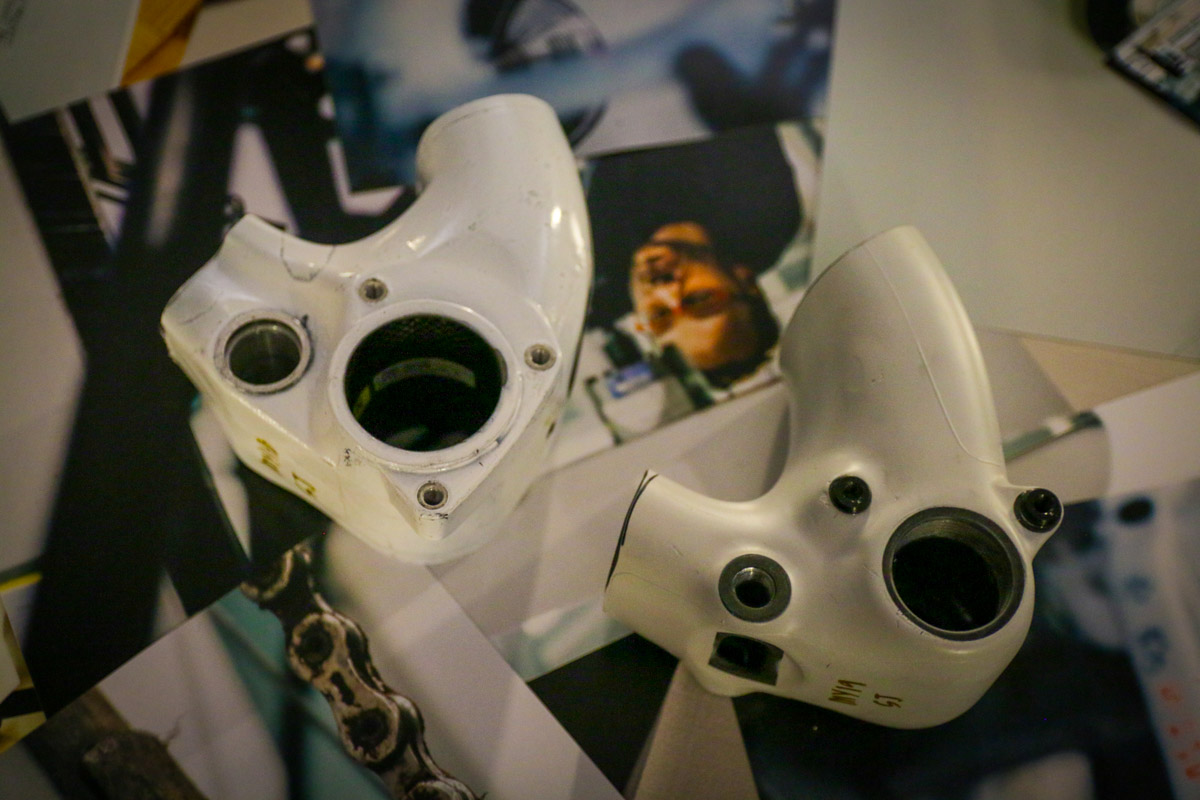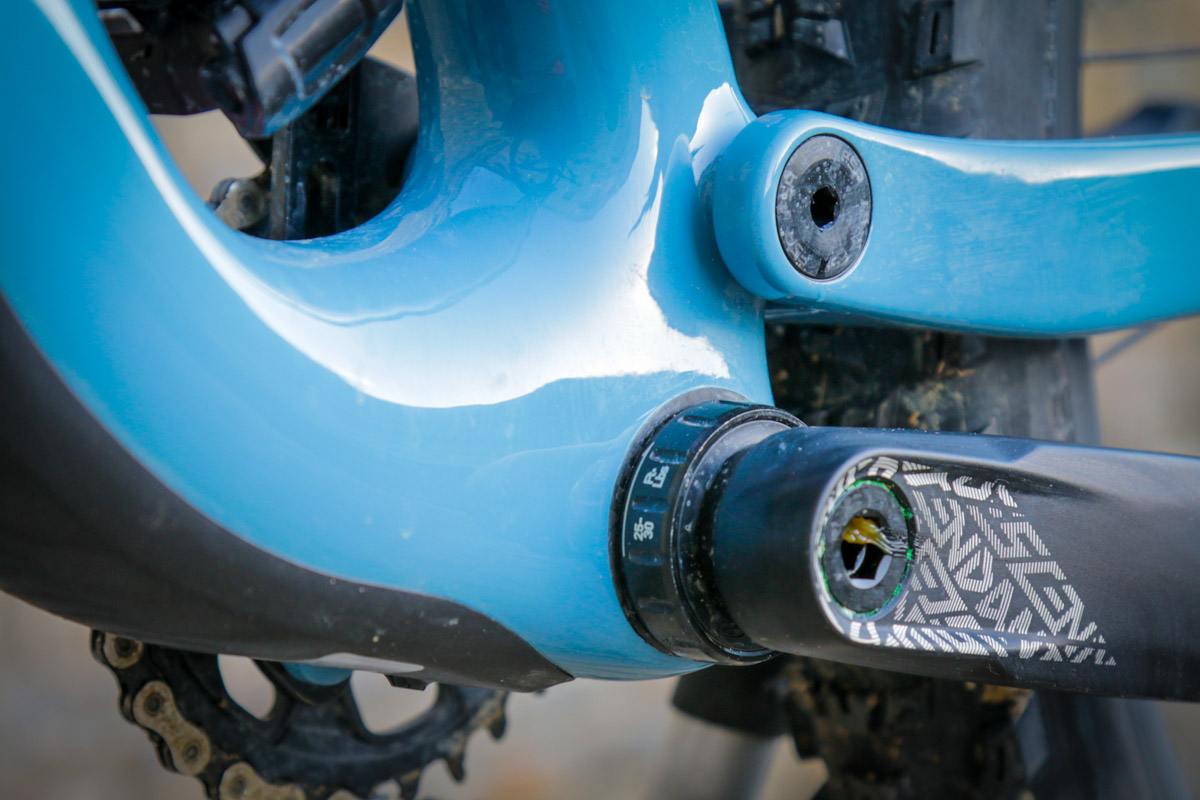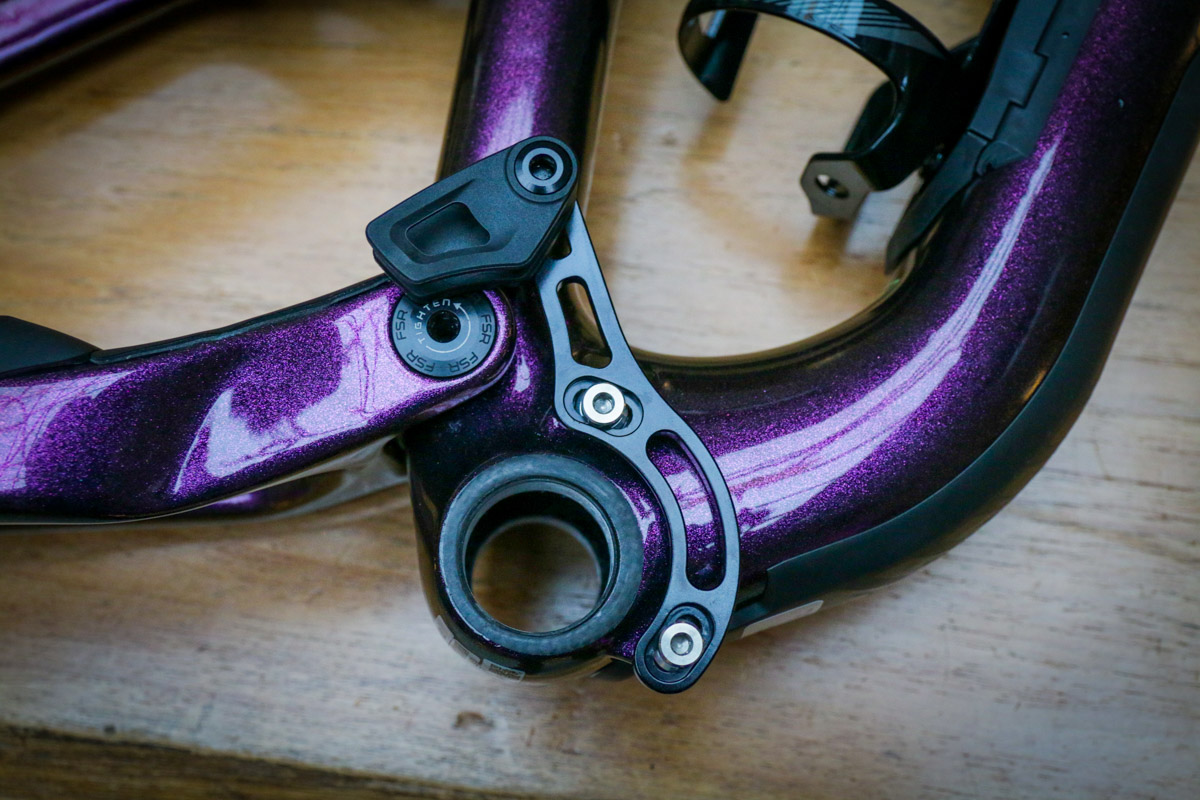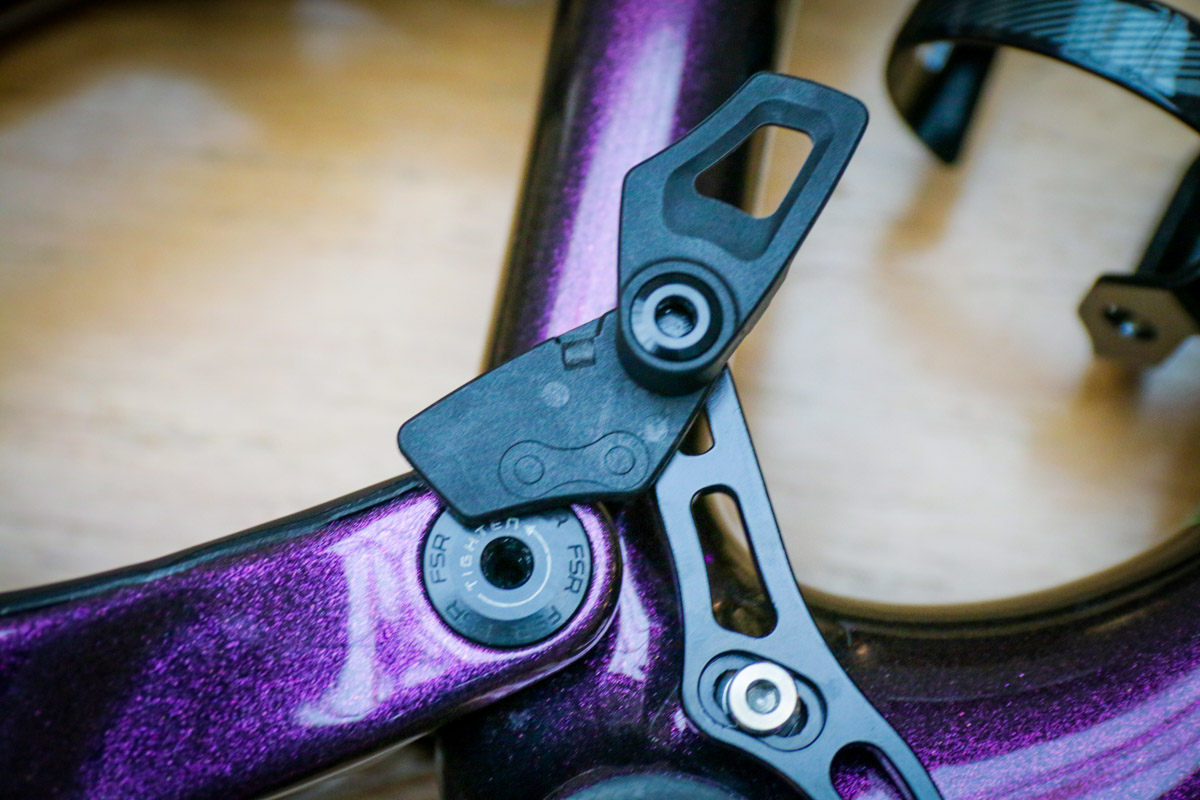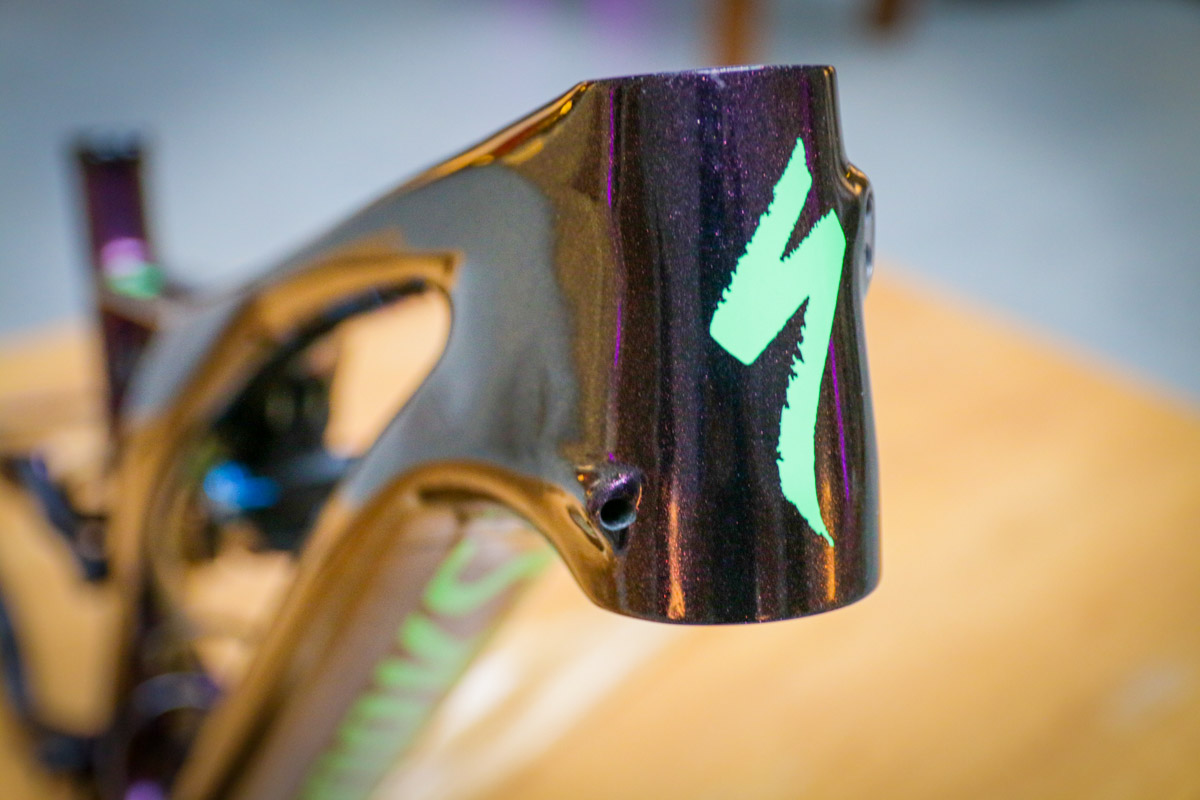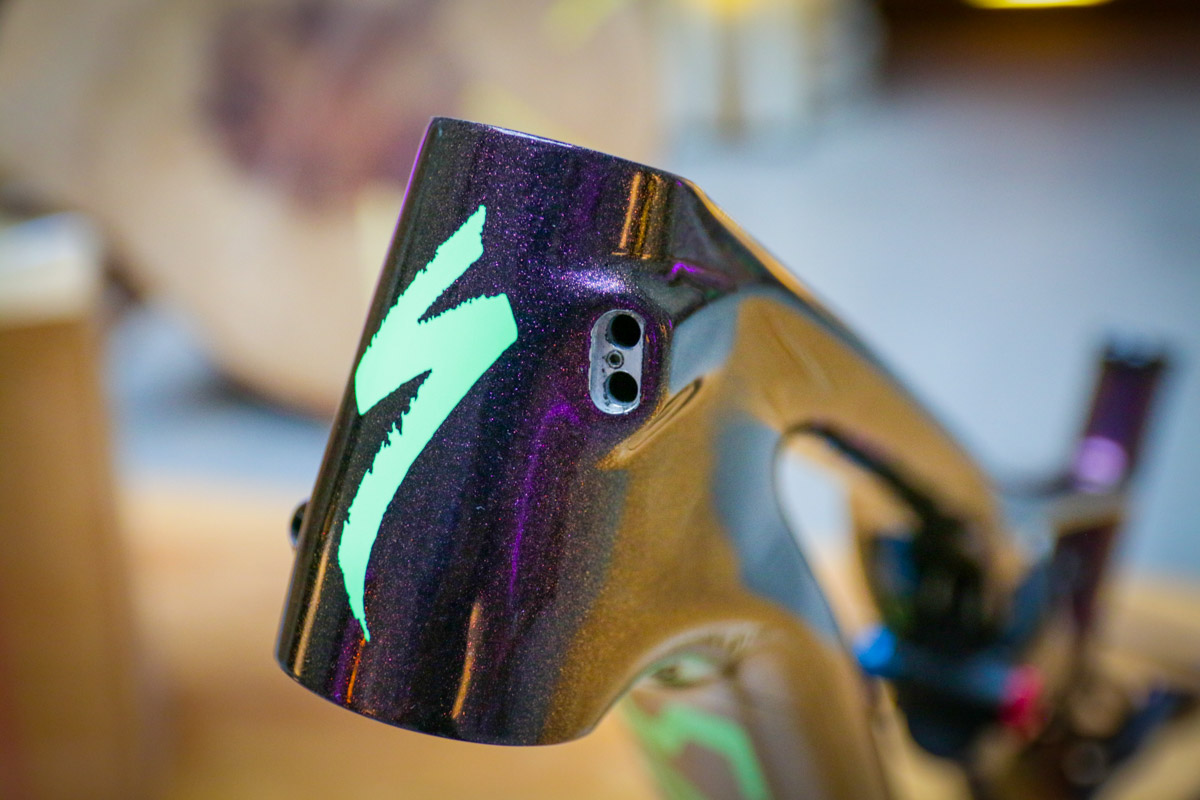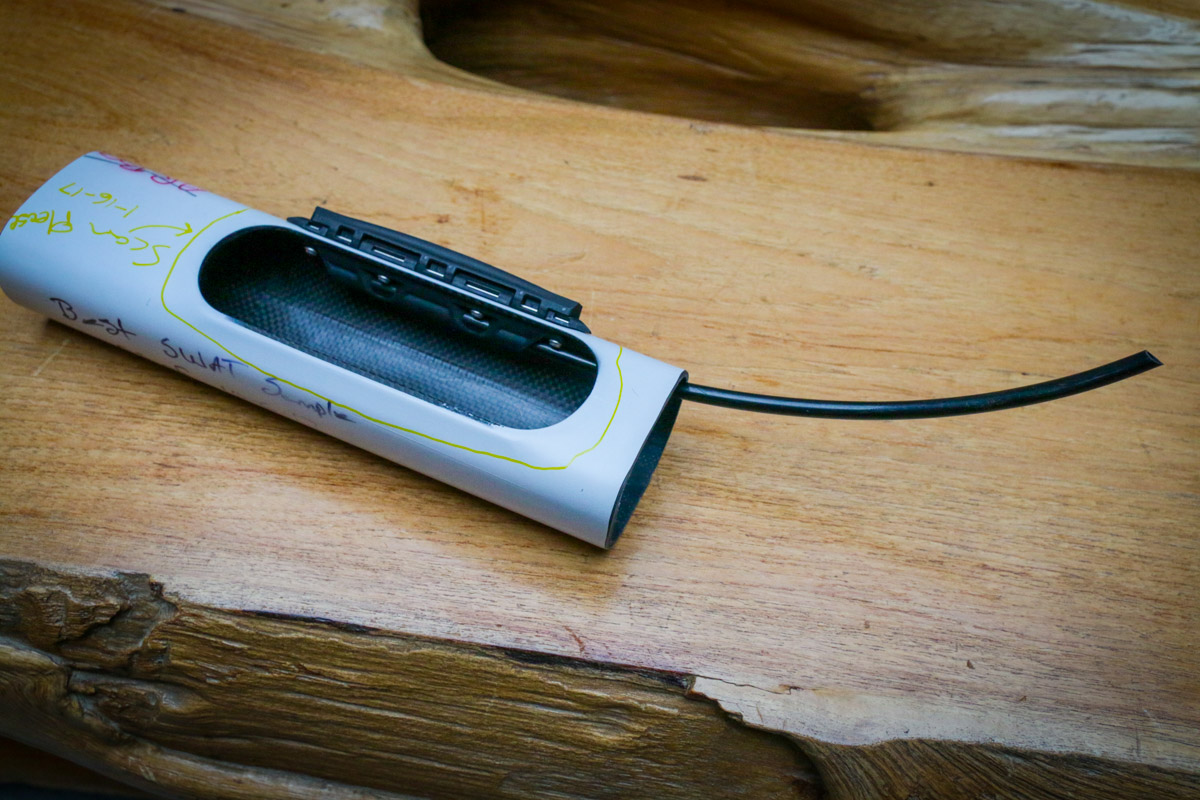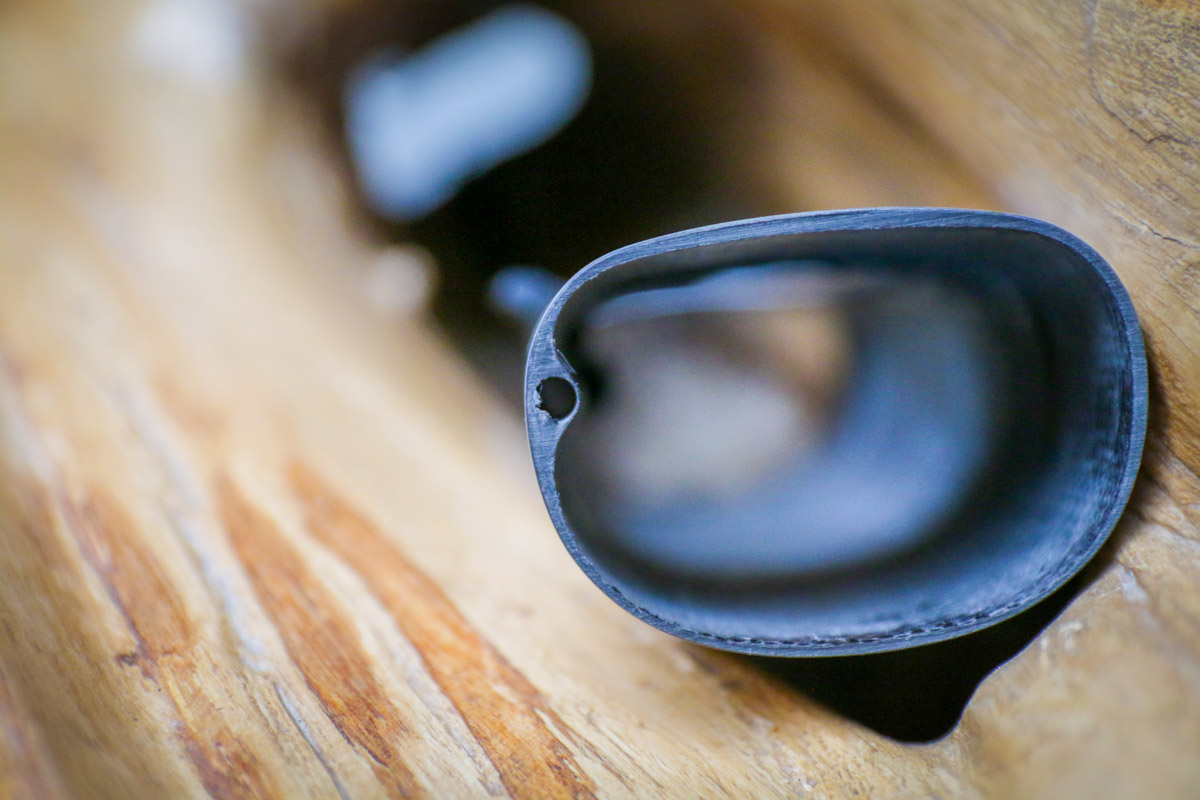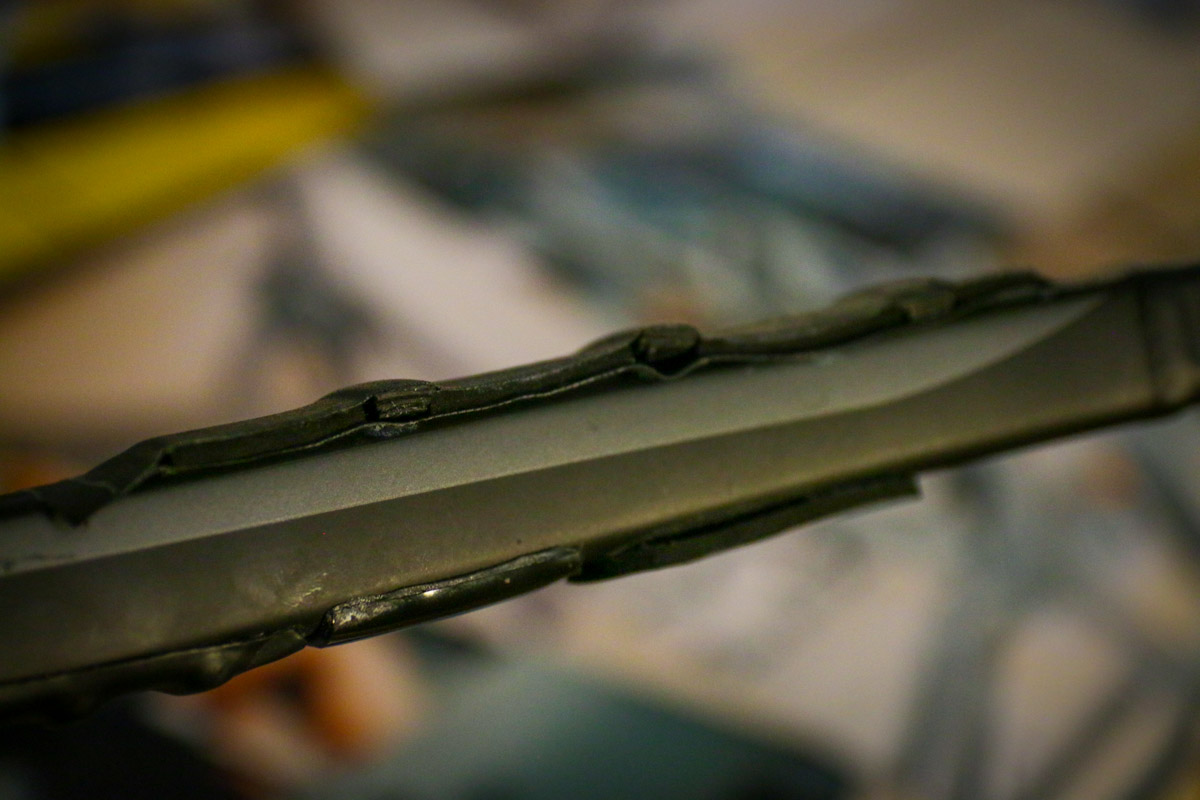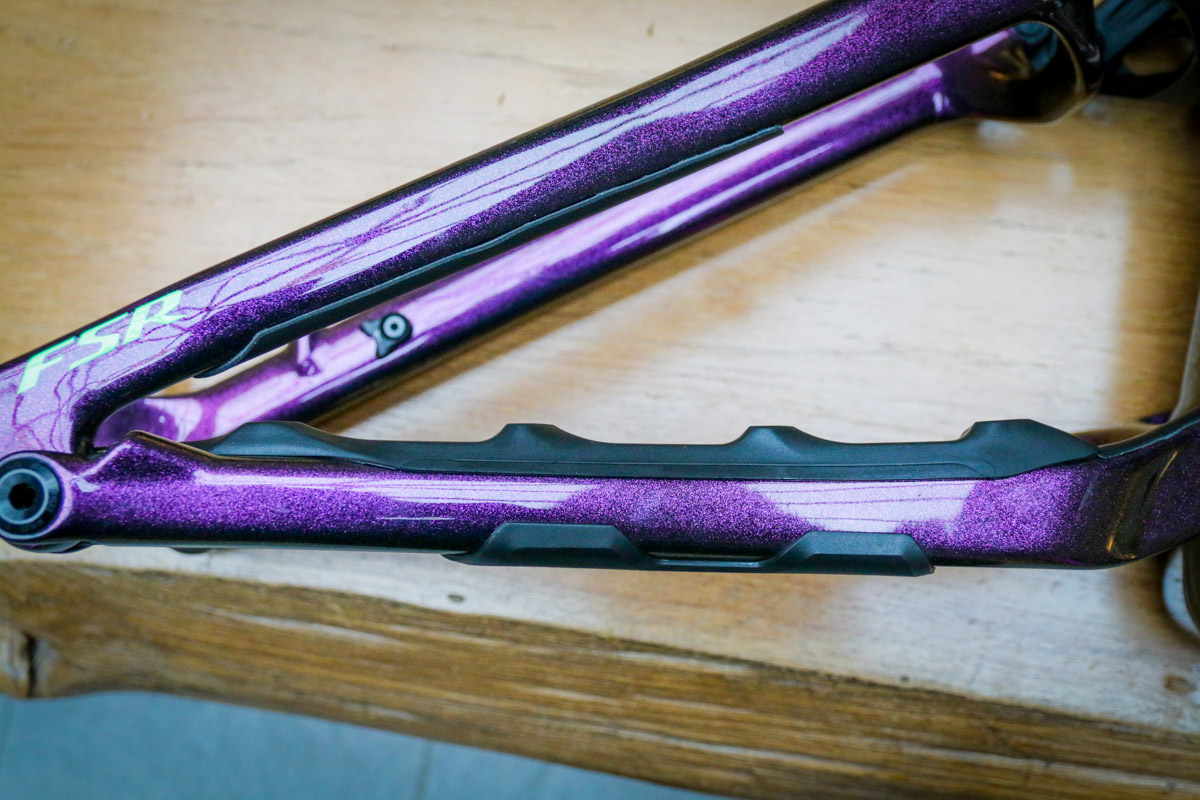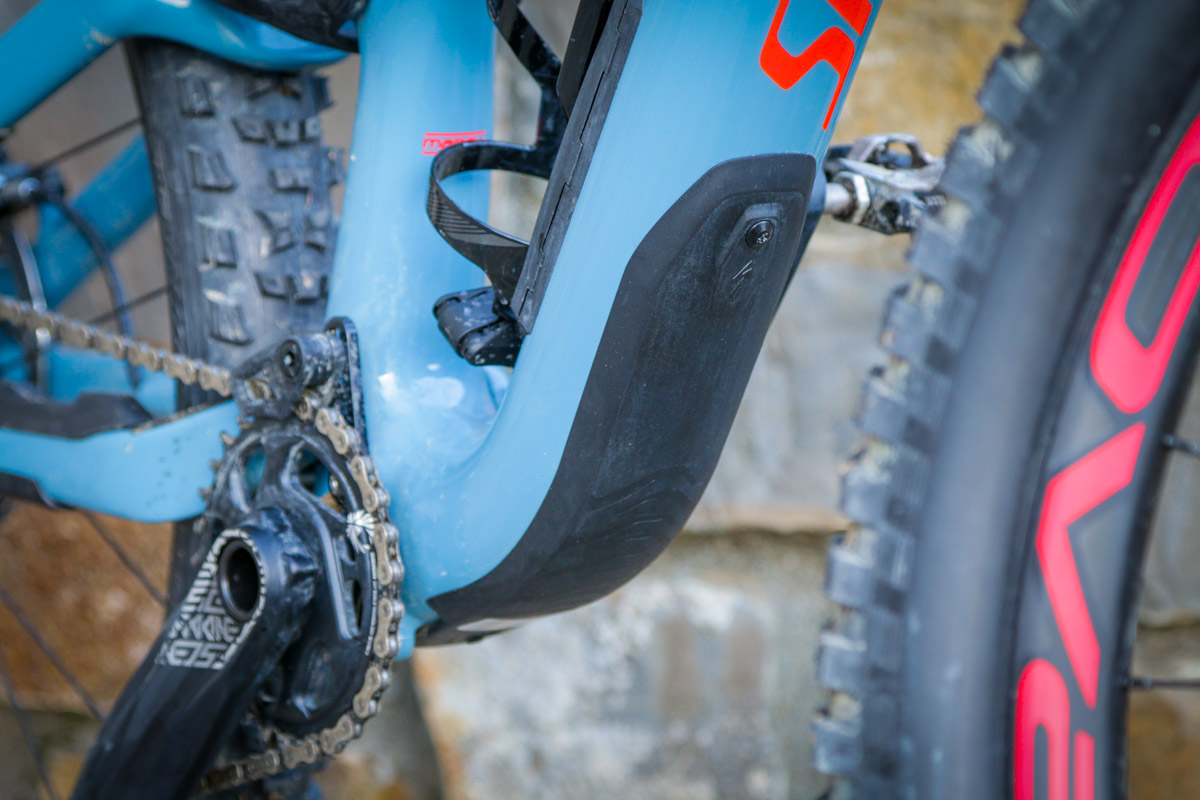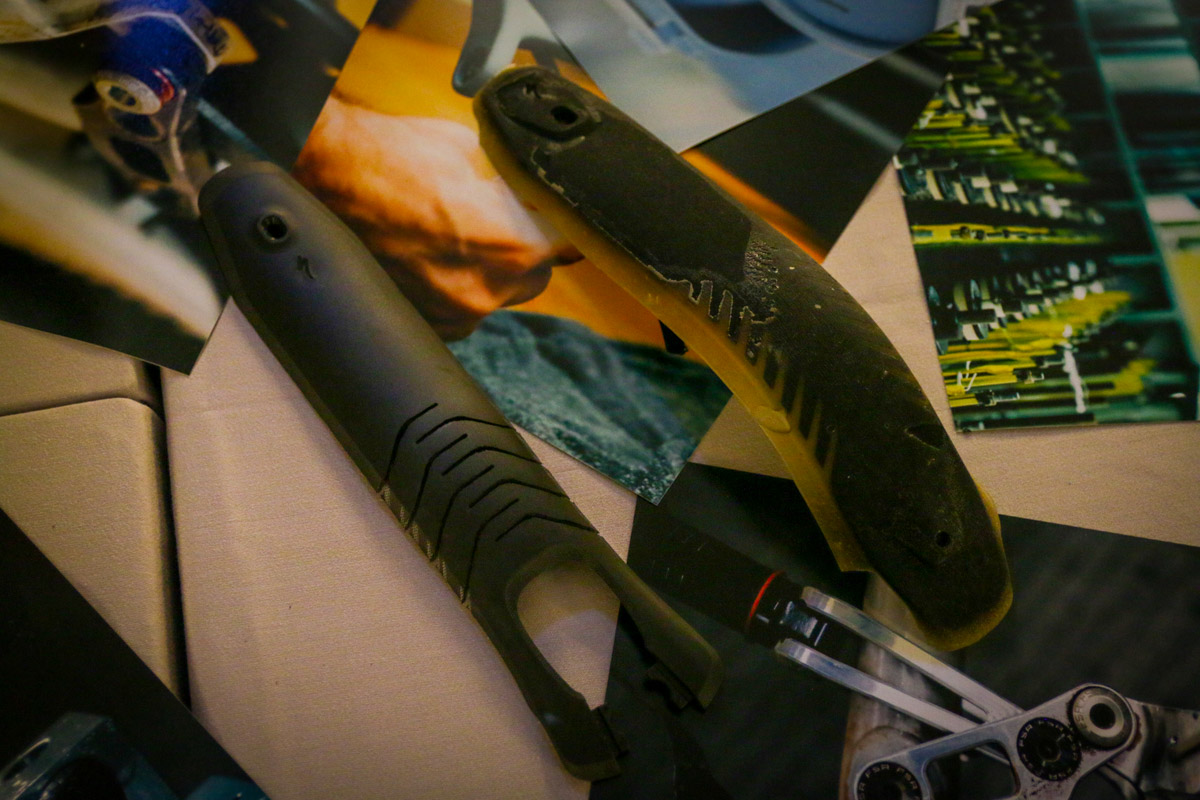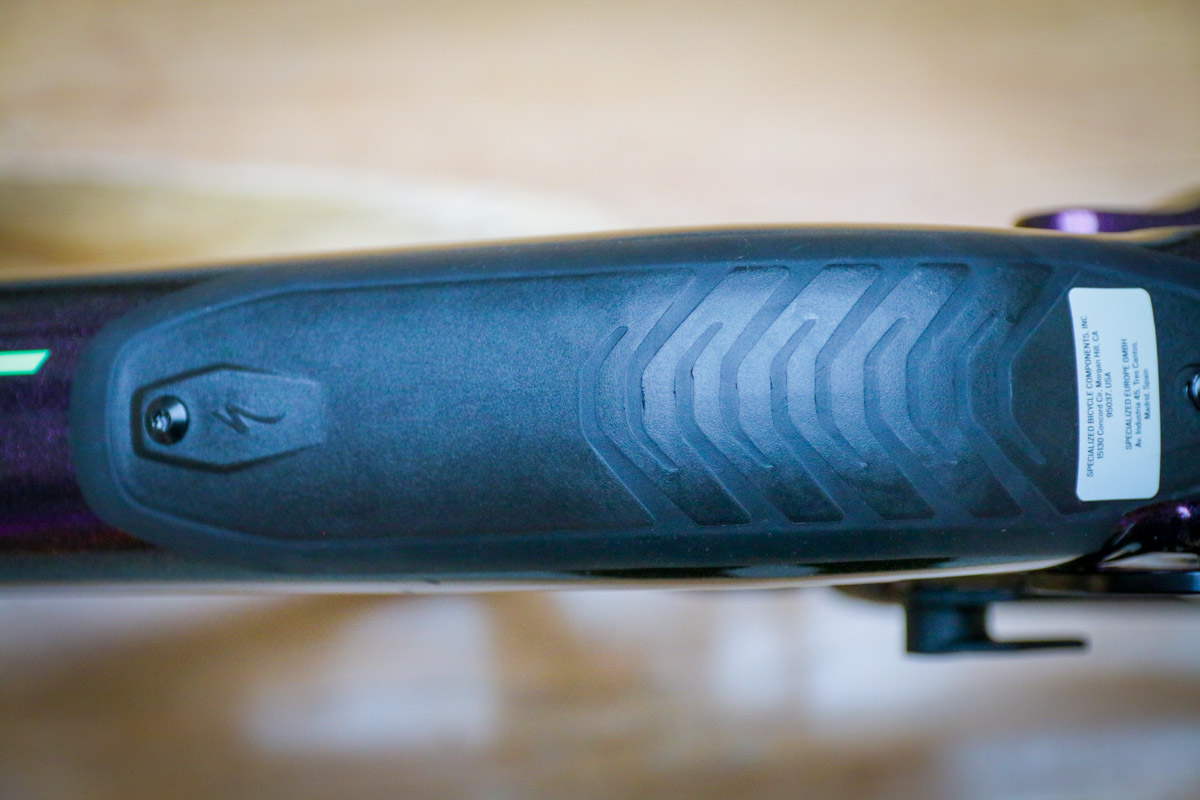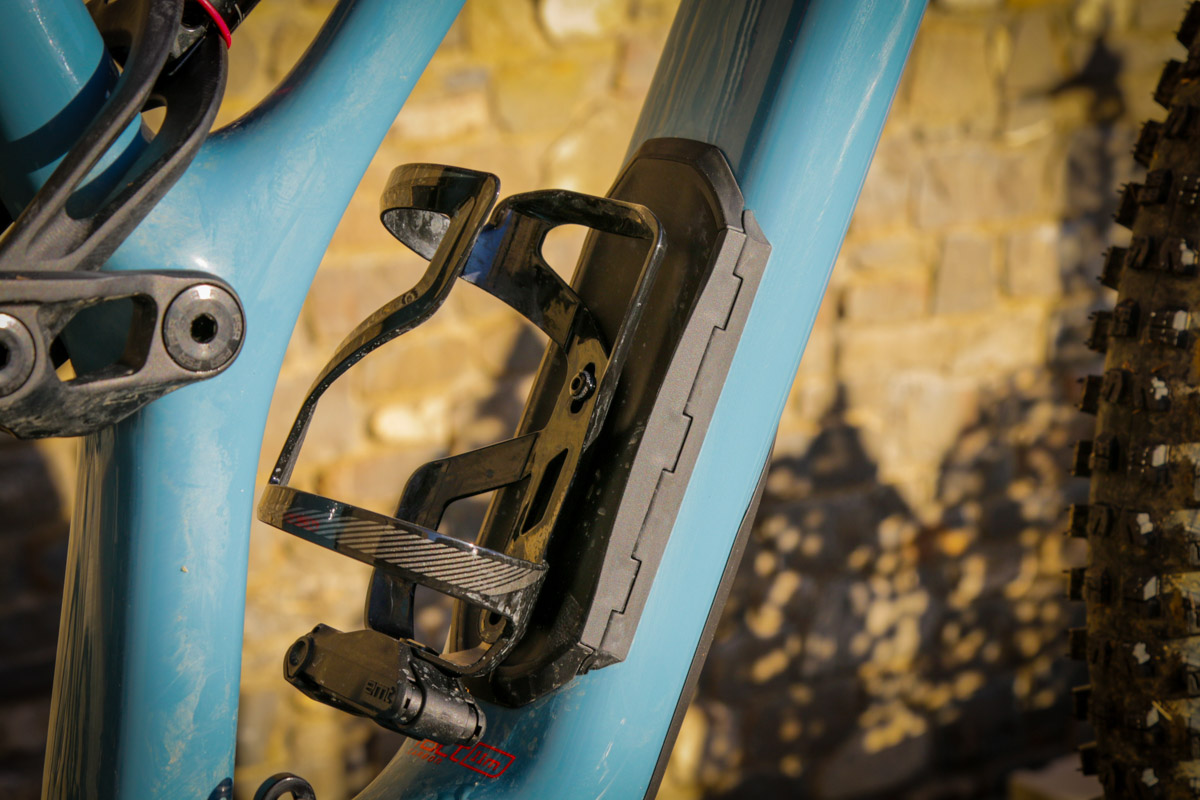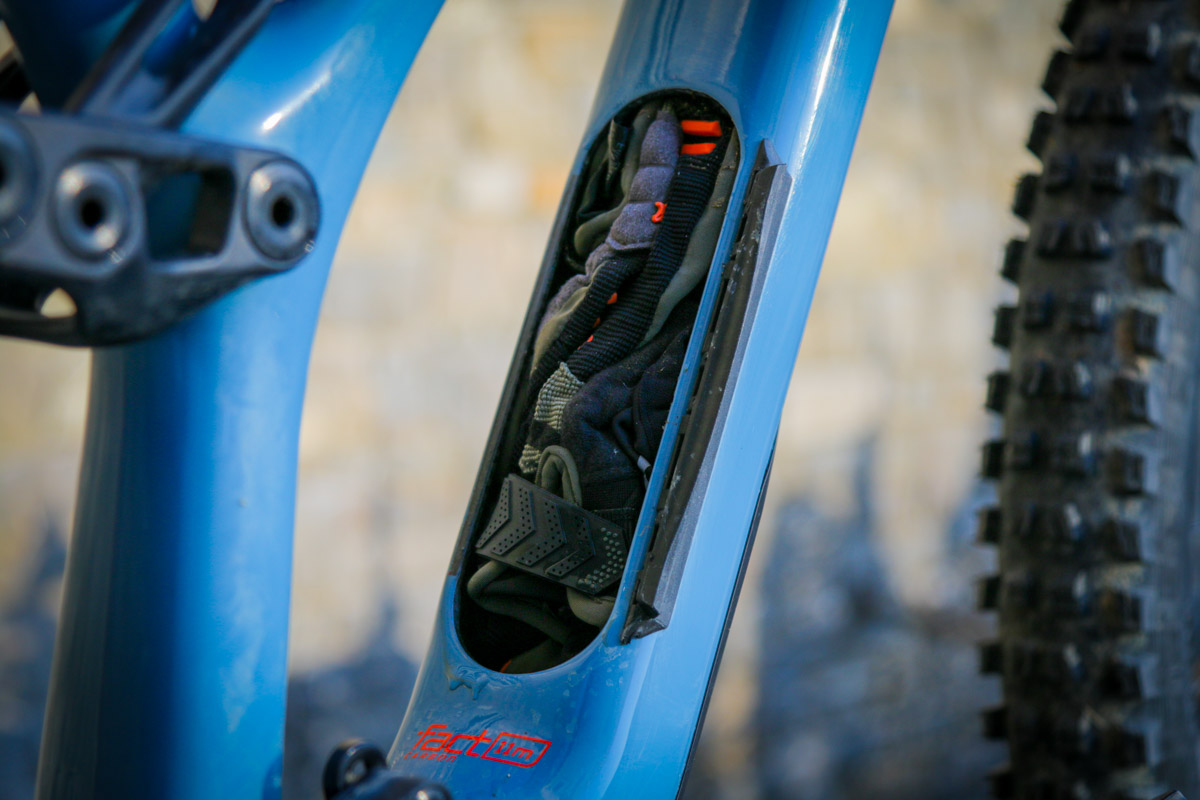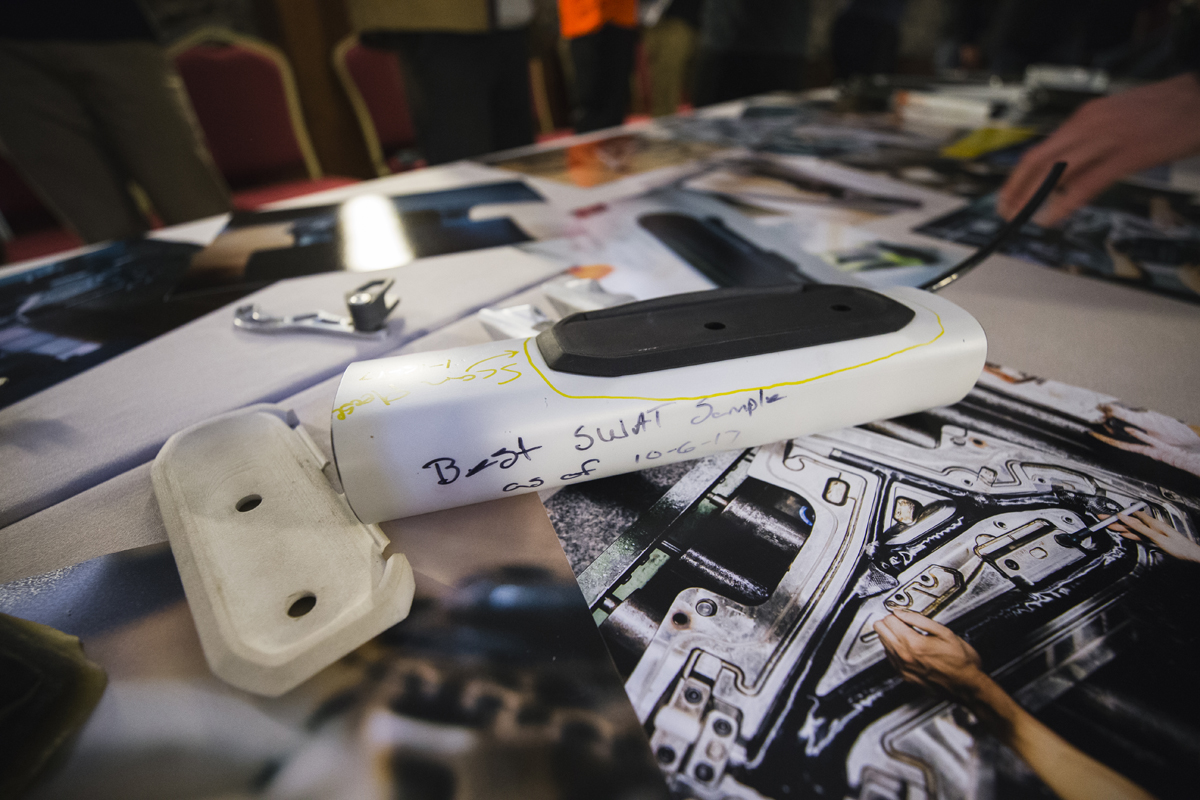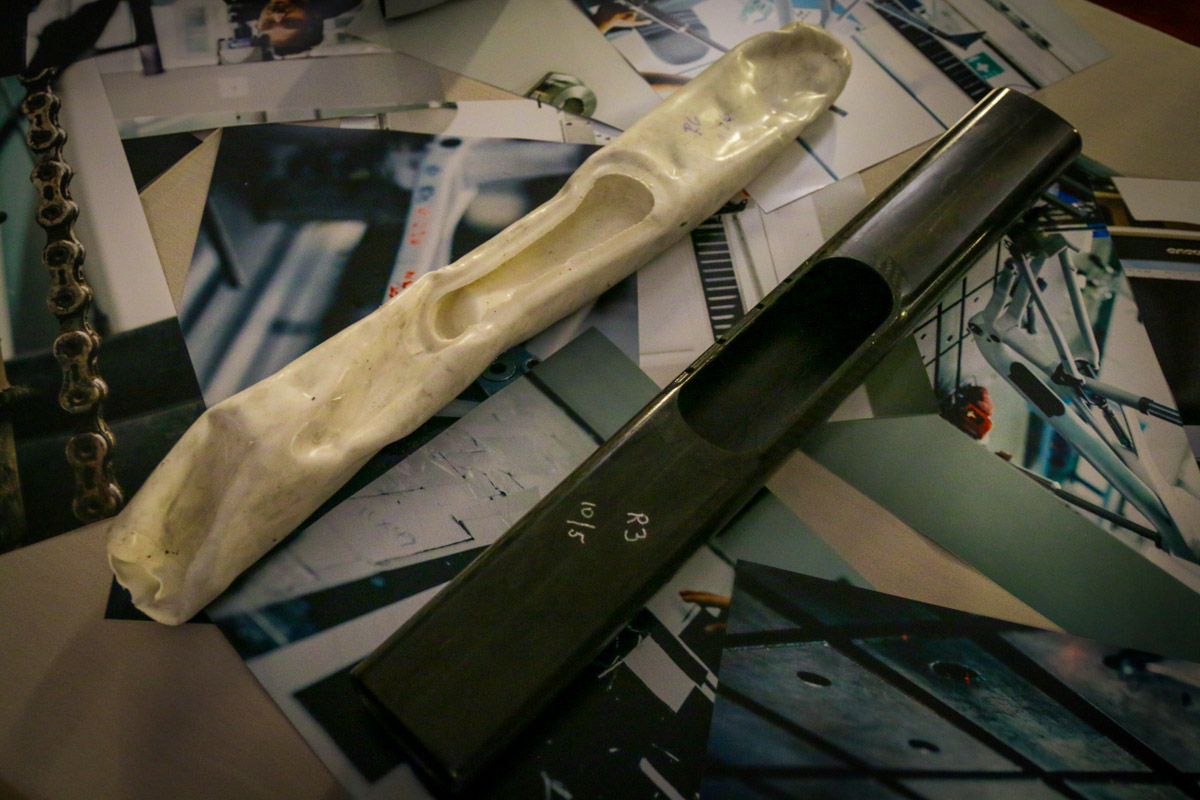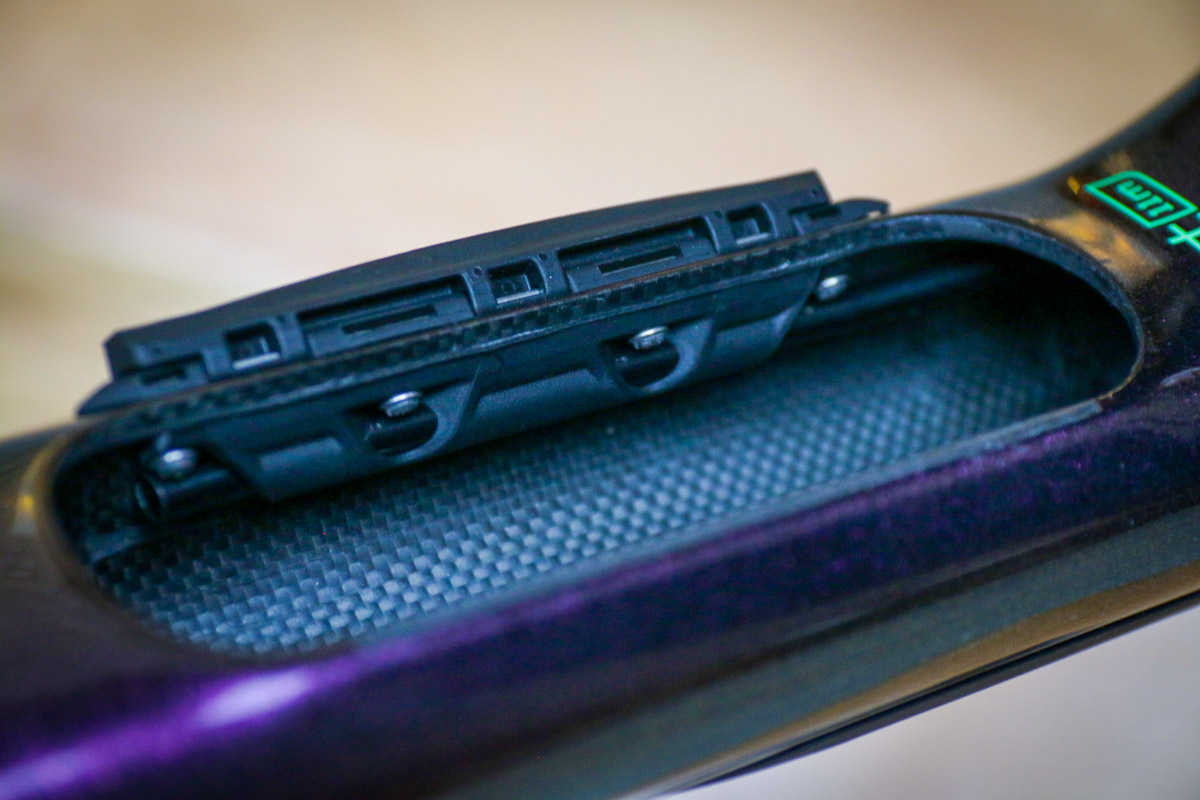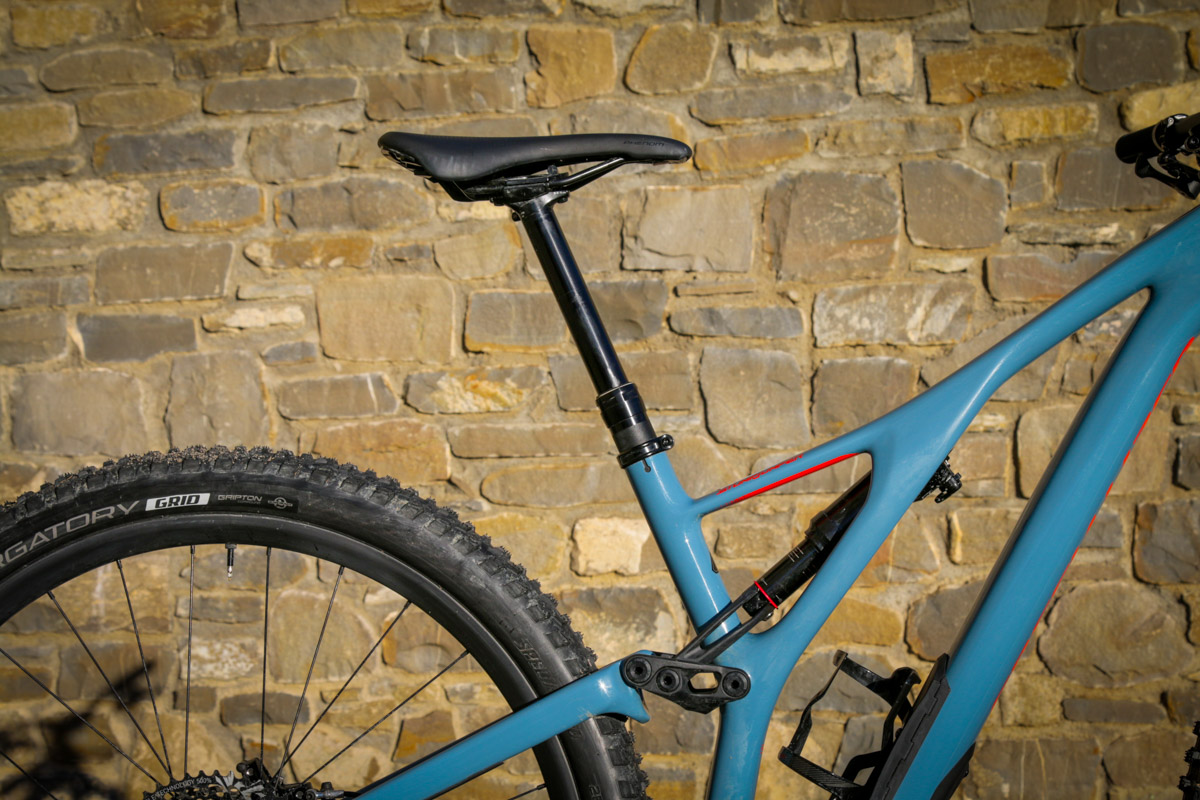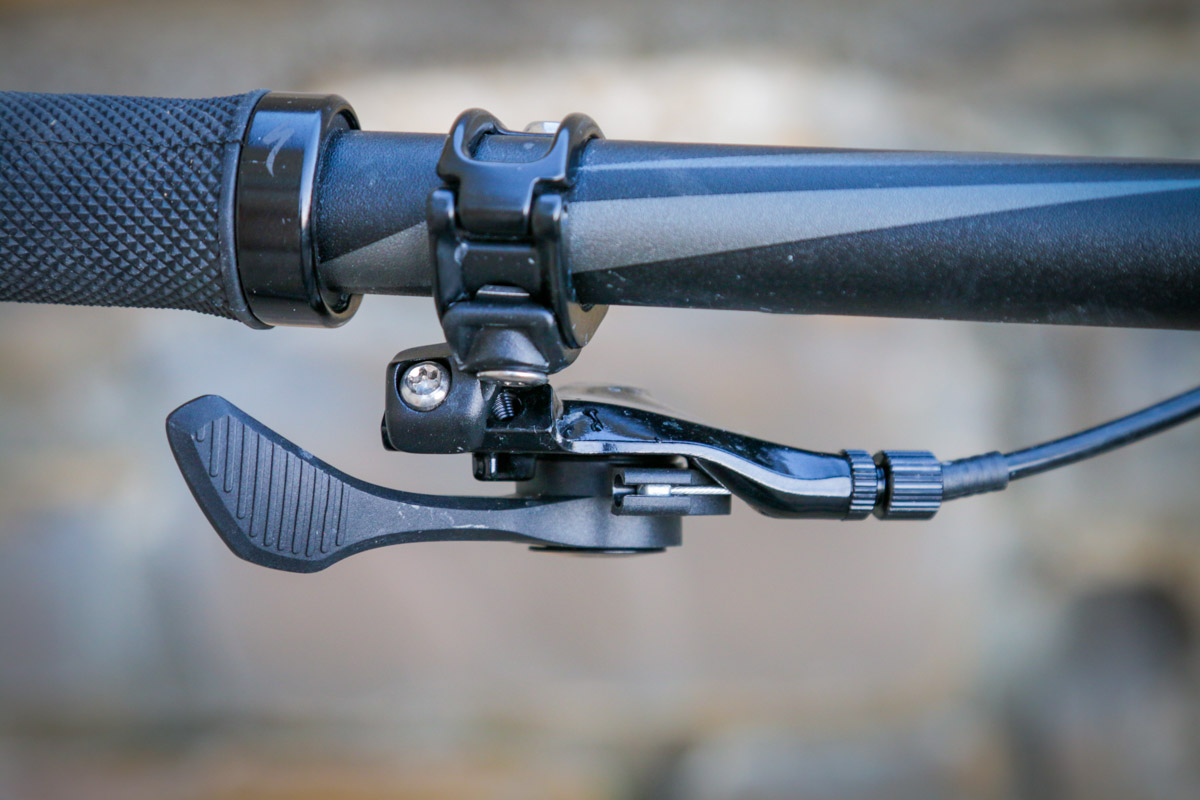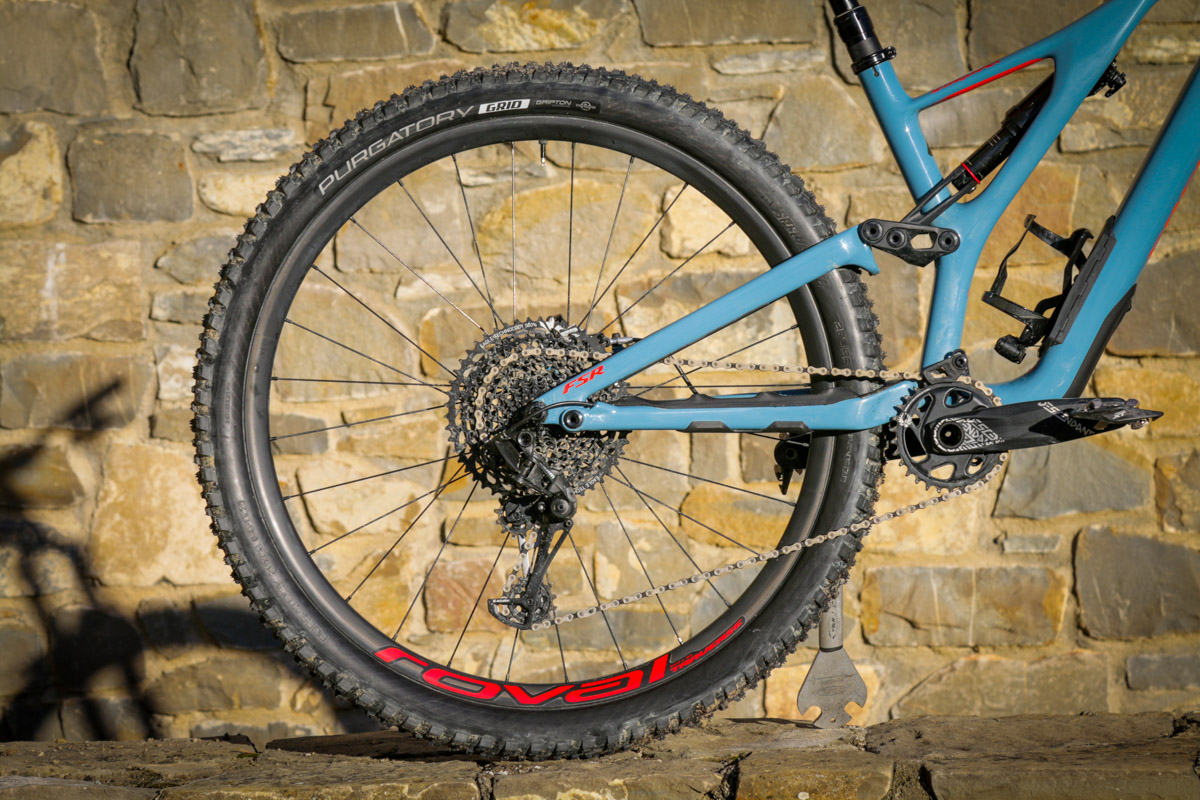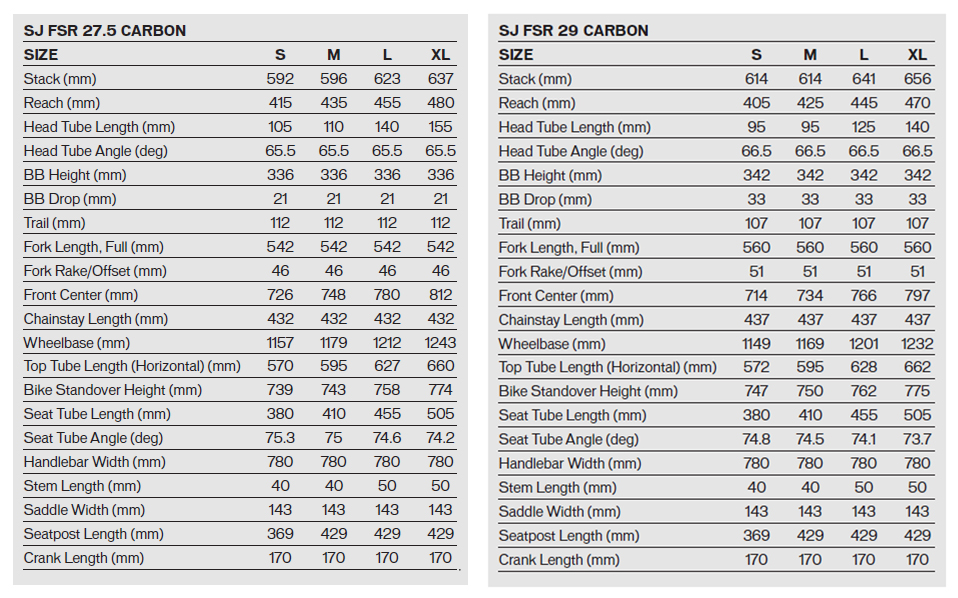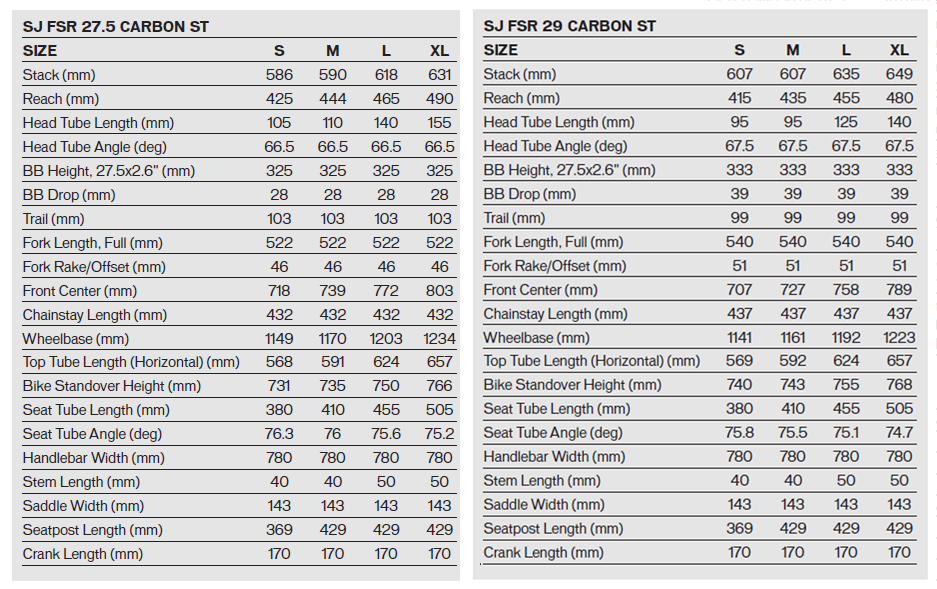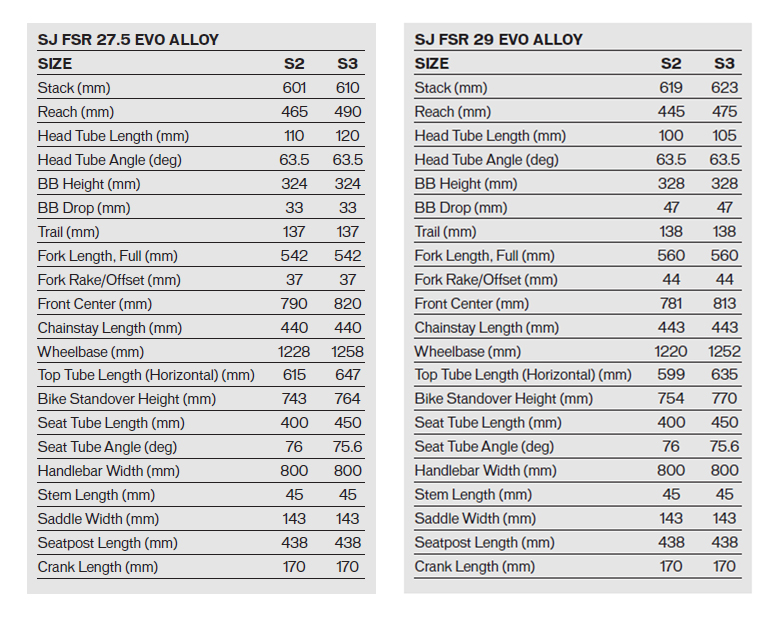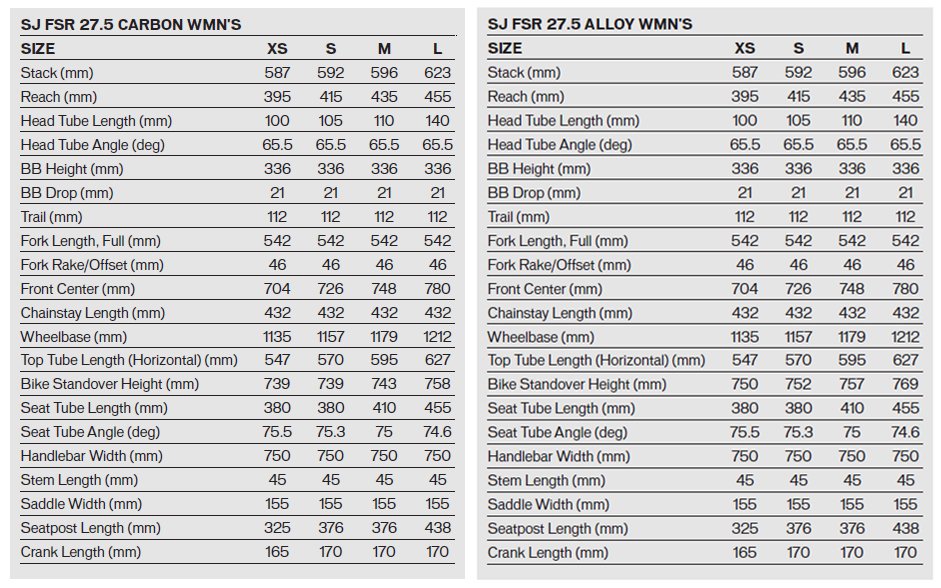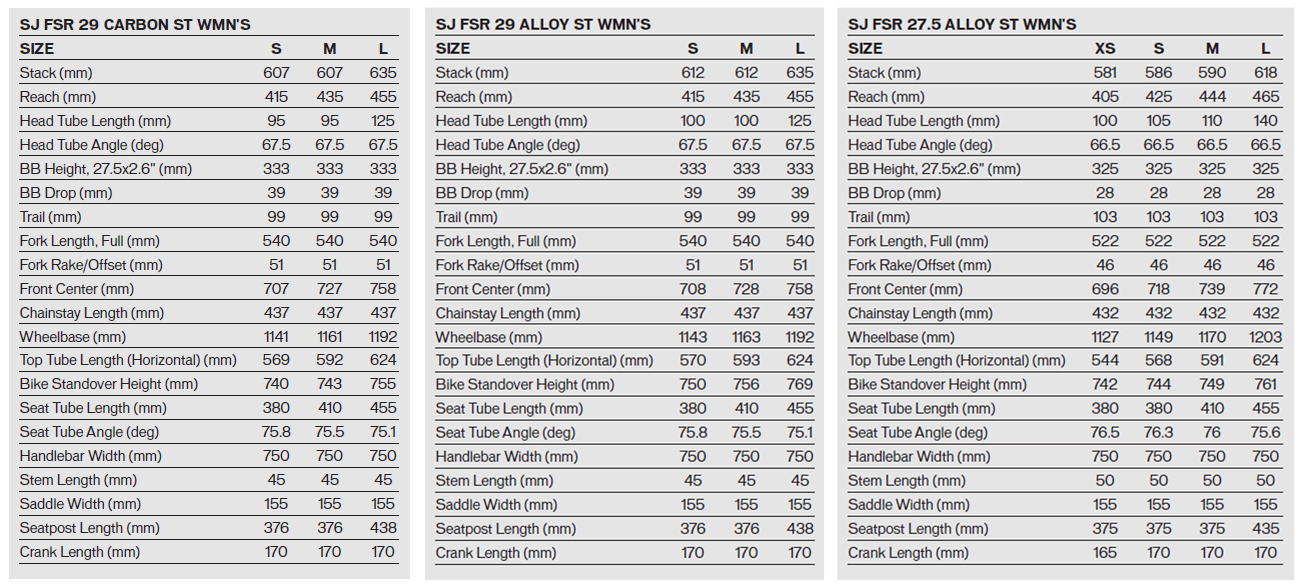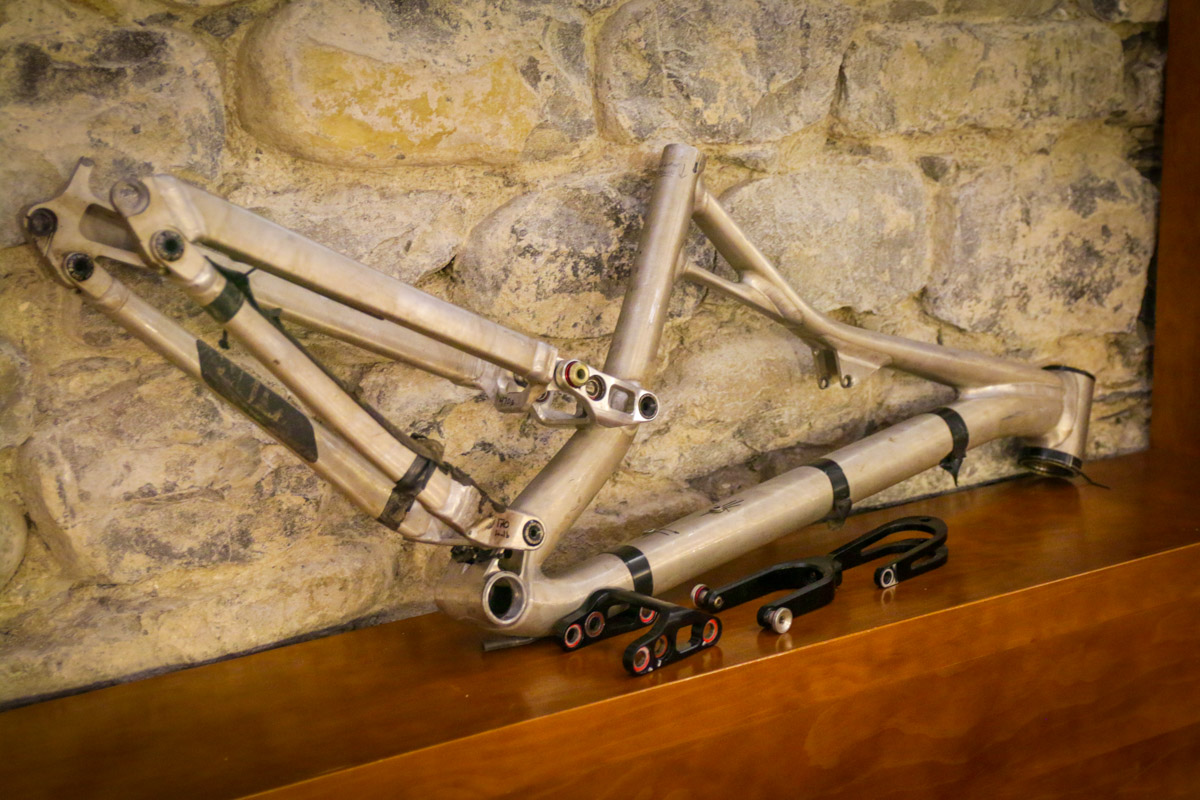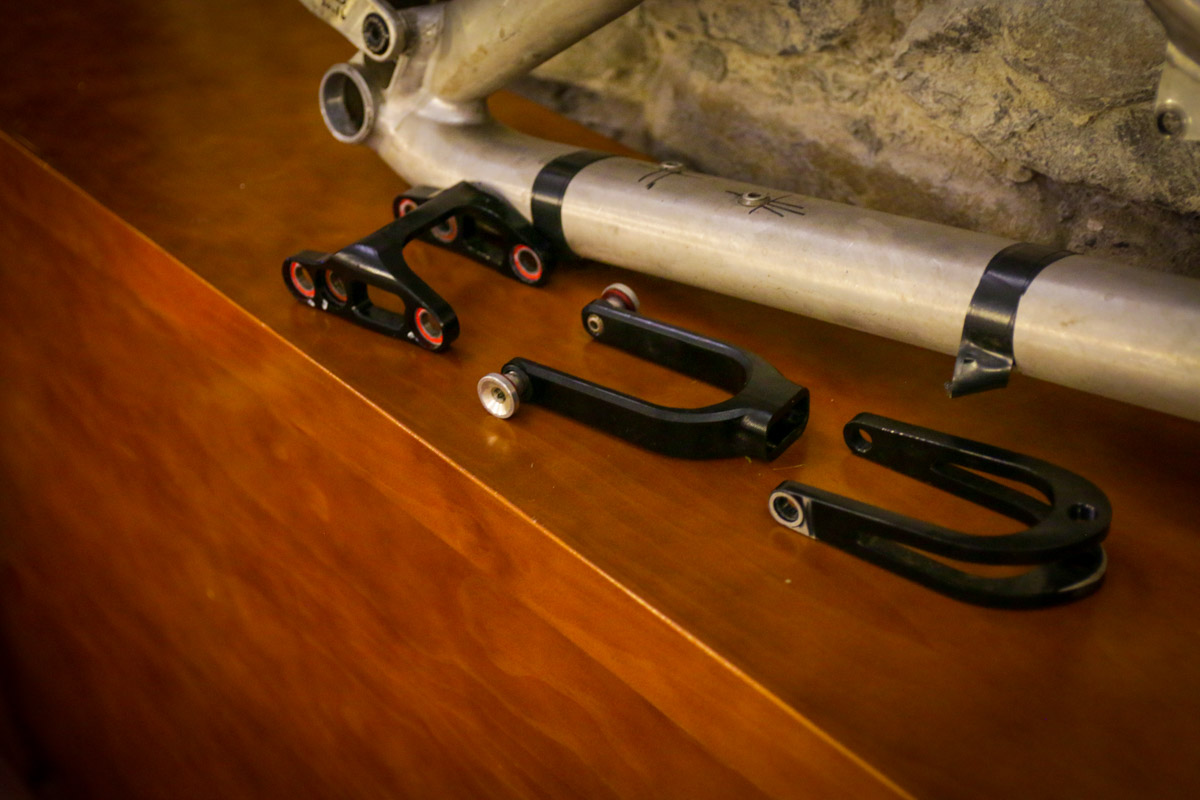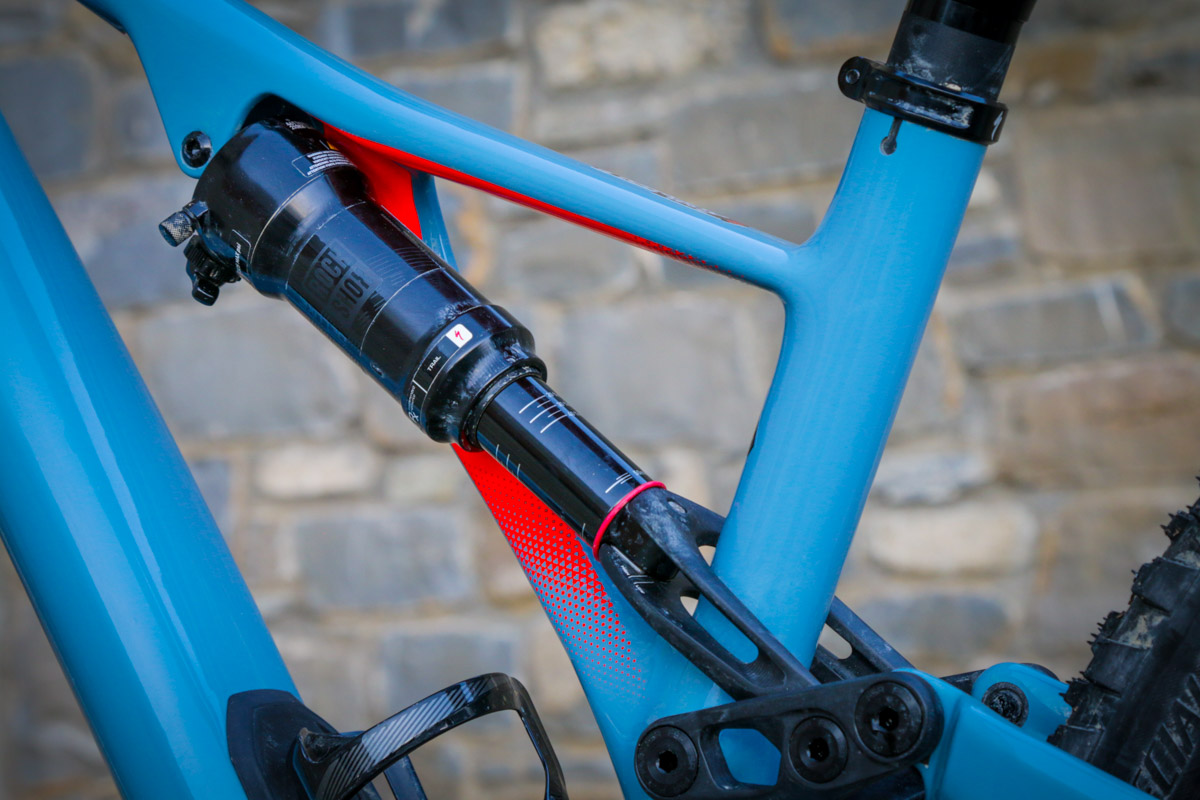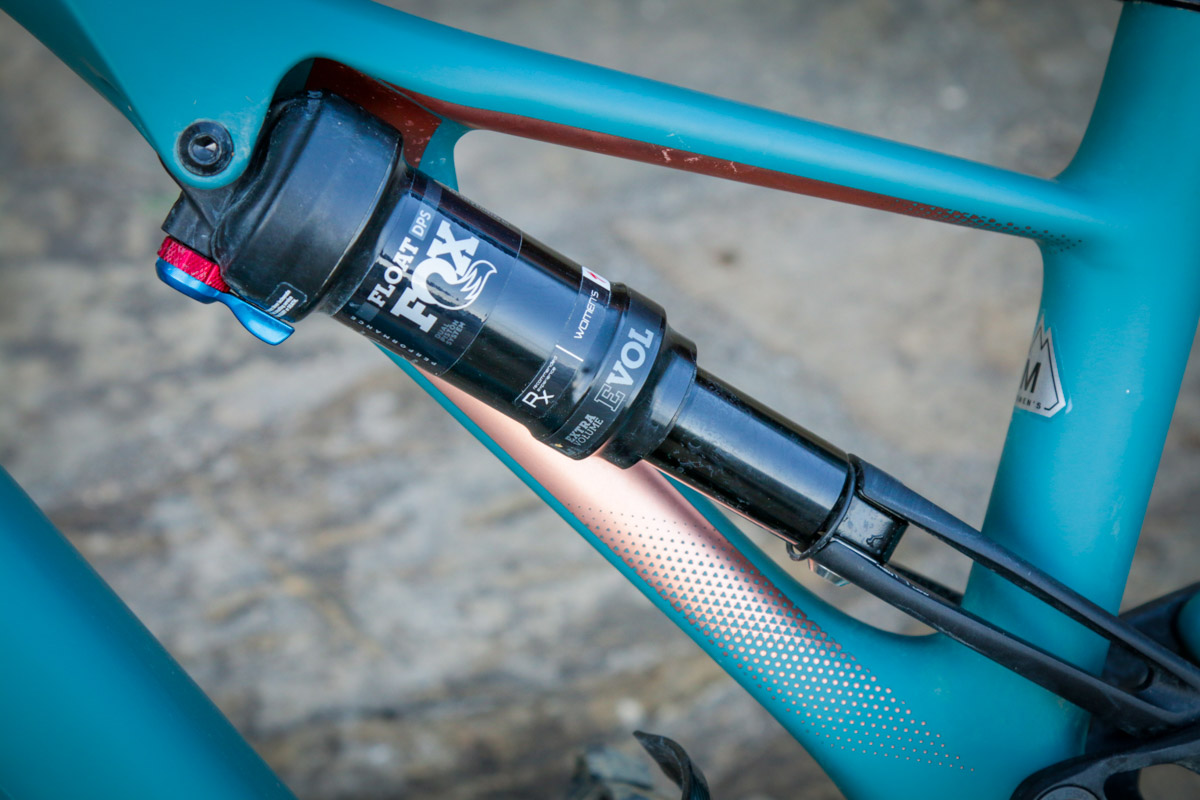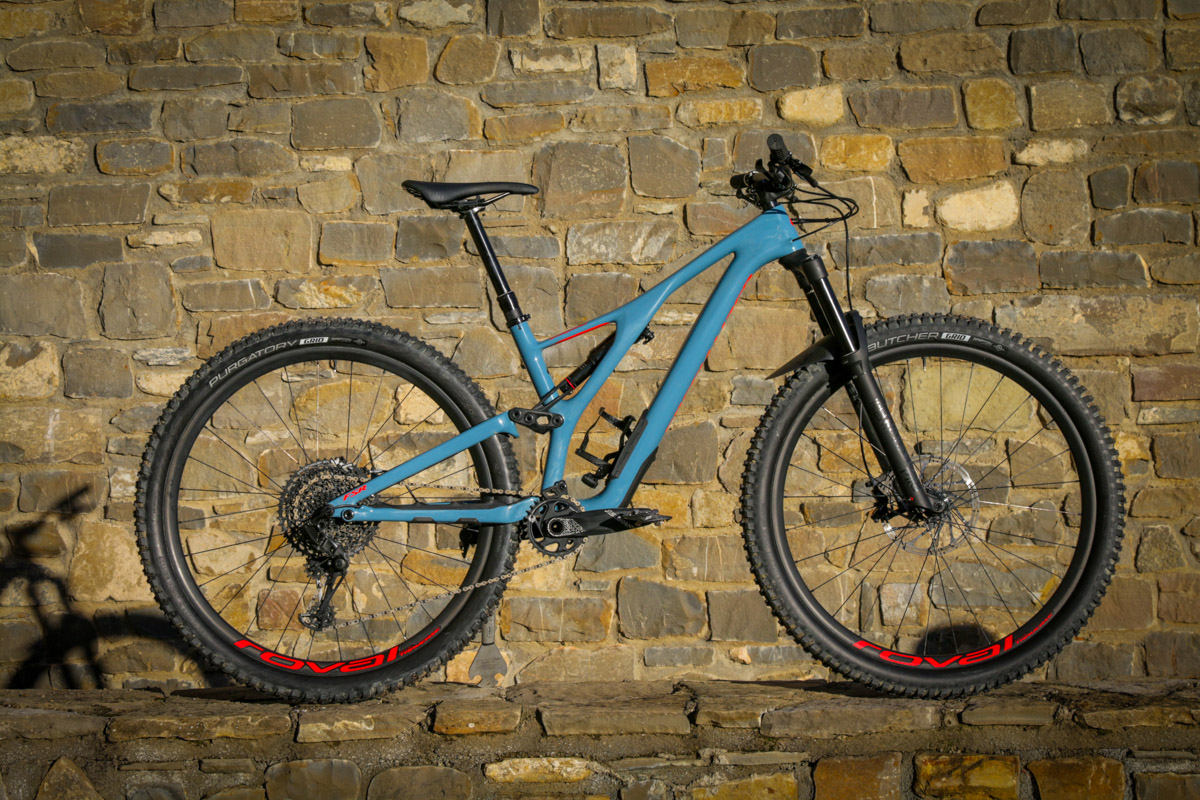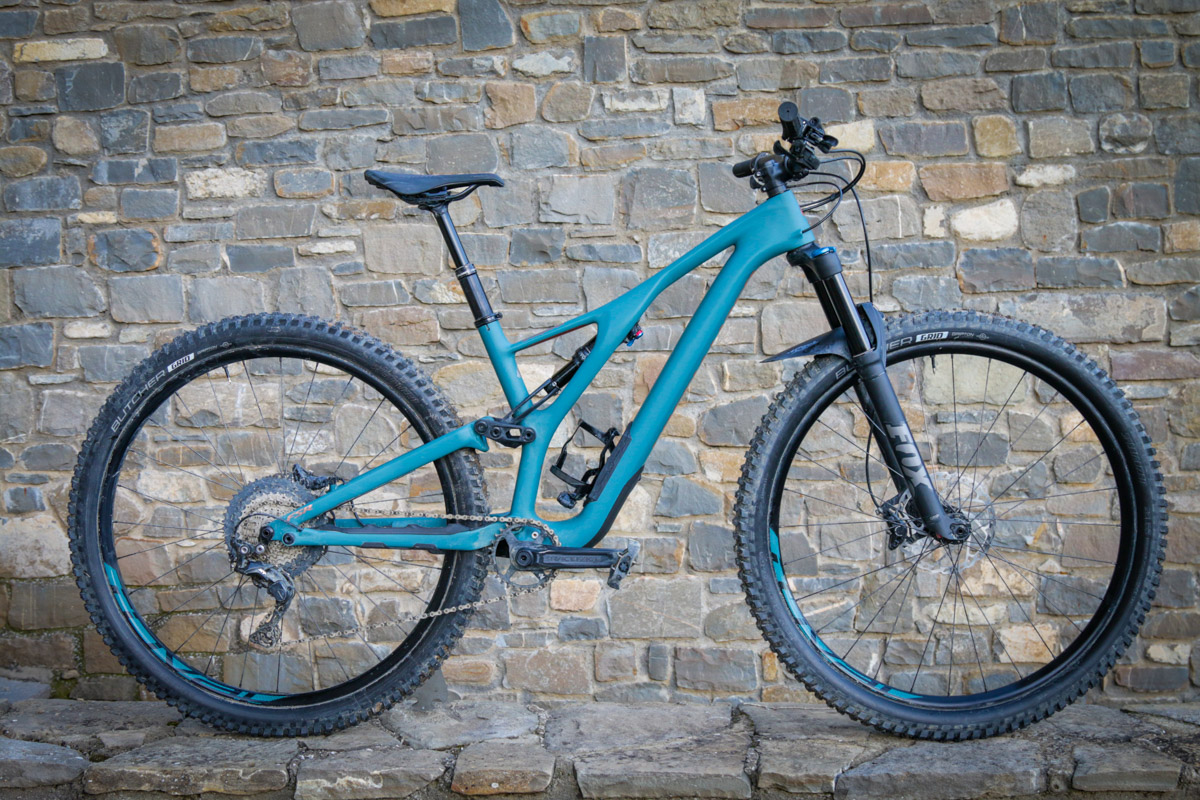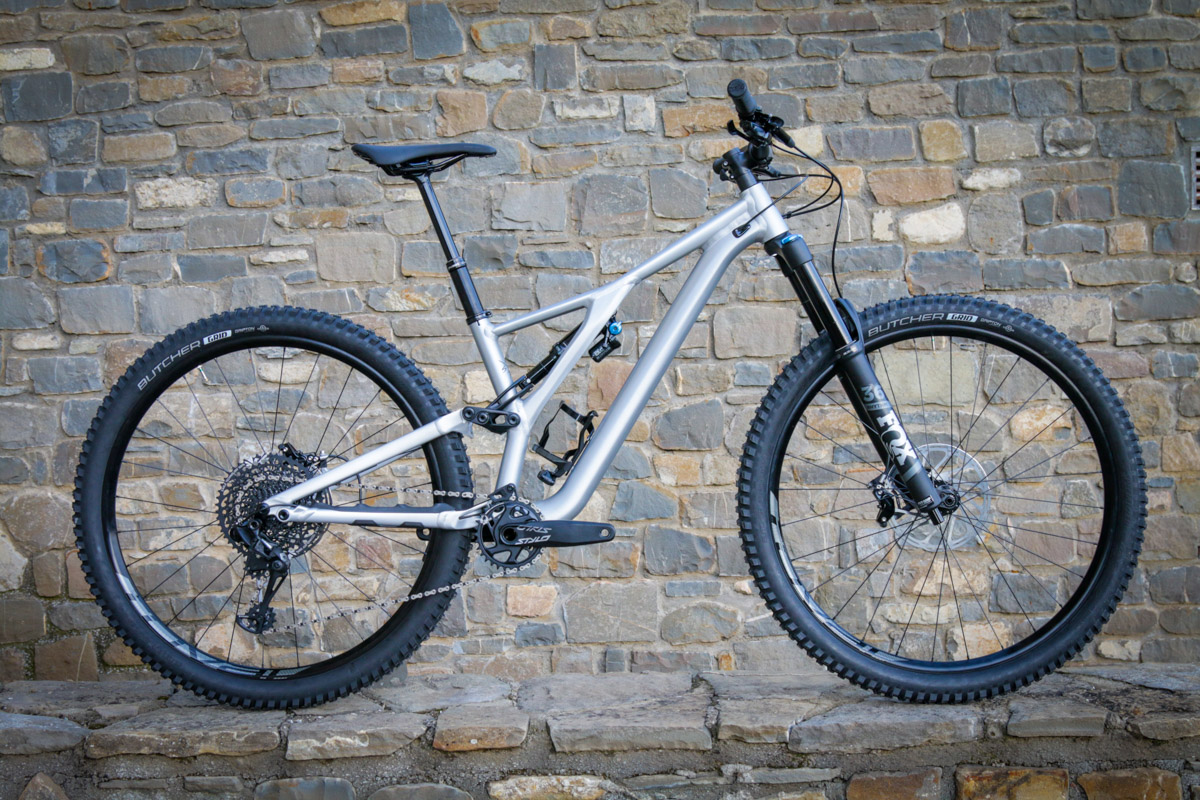Easily one of the most recognizable names in mountain biking, the Stumpjumper is pushing its 37th year in Specialized’ vocabulary. Originally introduced as the first mass-produced mountain bike, the Stumpjumper started its legacy with a 26” wheeled bike with a fully rigid steel frame and fork. That rigid bike soon became a hardtail with a suspension fork, and then a full suspension overhaul ushered in the Stumpjumper FSR era. Much has changed since those first TIG welded Stumpjumper frames rolled out of the factory, but the Stumpjumper name is still incredibly significant for Specialized, and after seeing what’s next, don’t expect that to change any time soon.
The current Stumpjumper was already a great bike, so what would Specialized change to make it better? In a word, everything. Starting with a completely new frame design, the Stumpjumper gets more adjustability, fewer proprietary parts, increased stiffness, way better cable routing, more tire clearance, and better functionality. There are also three distinct platforms to choose from, each available in 27.5 or 29″ wheels, as well as women’s versions with their own shock tune. Whether referring to the Stumpjumper, Stumpjumper ST, or Stumpjumper EVO, Specialized feels that they’re closer than ever to the “ultimate trail bike.”
New Sidearm Frame
There’s a lot going on with the new Stumpys, but the most obvious is probably the new frame design. Following in the footsteps of their redesign on the Demo DH bike, the Stumpjumper gets what Specialized is referring to as the Sidearm frame design. But the funky asymmetric profile is about much more than just looks. Before the Sidearm design was even a concept, Specialized’ Lead Design engineer Jason McDonald wanted to learn more about stiffness. Specifically, the relationship between the feedback presented to a rider from both their hands and their feet. Starting with two current gen Stumpys, one in alloy and one in carbon, Jason and and a colleague went out to a local trail to ride the two bikes back to back. Their findings were a bit surprising as the carbon bike had a tendency to blow through a specific corner which forced the rider to slow down. The alloy bike on the other hand had no problem making it through and was actually faster than the carbon bike.
The desire to figure out why the alloy bike was faster led Jason to develop a new stiffness test specifically for trail bikes. Joking that he lives and breathes stiffness testing, the new test protocol focused on the connection of the bike between your hands and feet, particularly in the XL size for larger riders (it’s worth mentioning that Jason is very tall, and therefor rides an XL). Testing eventually revealed that the alloy bike was stiffer at the front end which allowed for a more connected feeling through both input points to the rider. After figuring out why the two frames handled differently, it was time to figure out what they were going to about it.
Further testing back at home would reveal that while some current smaller frames were adequate in stiffness, the larger carbon frames were lacking. That led to new size specific handling targets as part of their Rider First philosophy. This desire for increased stiffness in certain sizes led their engineers to not only a new carbon layup, but the new single sided frame and offset shock design which is so visible. The whole point to the offset shock design is the ability to fit in the additional carbon frame member from the top tube to the seat tube which is responsible for increased stiffness for the larger sizes. With the carbon strut on the right, the rear shock gets moved to the left in a way that still offers plenty of clearance for your knees.
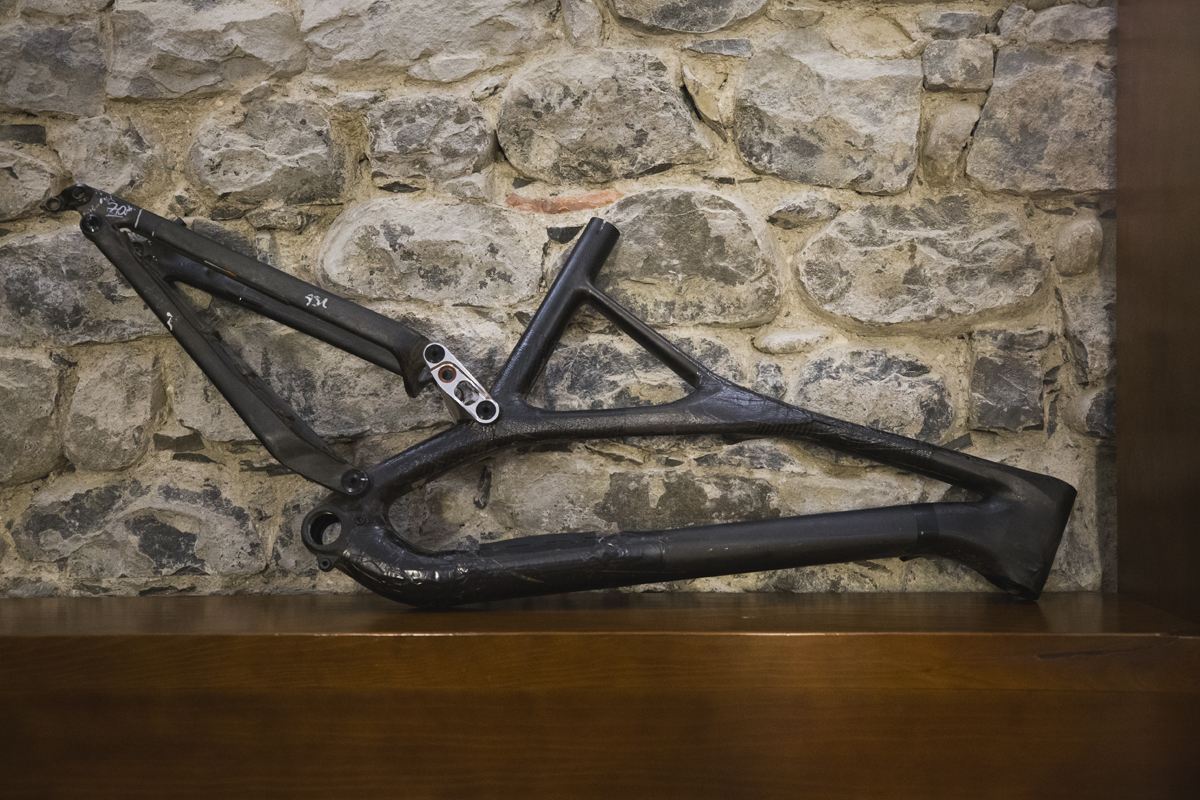
After conceptualizing the design, a carbon prototype was created to continue testing and development. The prototype ended up being super light, but it didn’t meet their stiffness targets. So Specialized Engineers added new carbon plies to the prototype, retested, and repeated until they met their goals. Jason points out that cutting a giant hole in the downtube for the SWAT box makes his job a lot harder, but they feel that the added functionality of the system is worth it. In the end, they came up with a front end that was 19% more efficient – which they could use to make the frame 19% stiffer, or 19% lighter. That means that a medium frame retains the same stiffness of the previous gen, but is 140g lighter up front, while the larger front triangles stay the same weight but gain needed stiffness.
With the majority of the focus on the front end, the rear end of the bike was still not forgotten. By adding a bridge between the seat stays, Specialized was able to increase rear end stiffness by 8% while also reducing the weight by 100g for every size. This may all scream of stiffness, stiffness, stiffness, but Specialized confirms that there is a such thing as too stiff. That’s why the small and medium bikes retain the same level of stiffness of the previous model, but large and XL increase it.
Once the stiffness goals were met, Specialized turned their attention towards the standards and features of the frame. Likely one of the more welcomed changes will be the transition to a standard threaded bottom bracket instead of PF30. Not only should that appease the masses, but it actually resulted in a lighter bottom bracket assembly.
Part of that weight reduction is a move from three bolt, to two bolt ISCG 05 mounting tabs. Frames also include a new chainguide to match, that features a tool free upper guide that can be opened trail side for clearing mud (had to test this one personally, and it works). The guide also features an imprint of a chain link which is used to line up with the chain when adjusting the height of the guide for different chainrings.
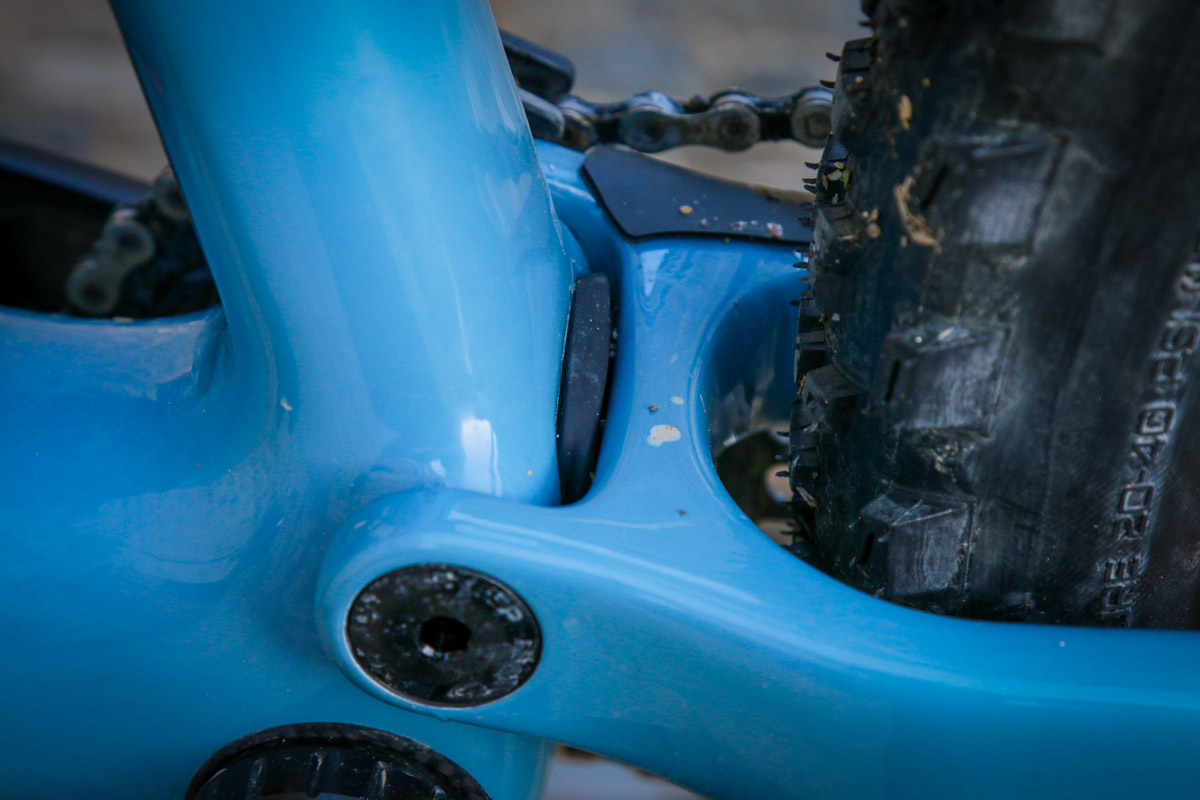
The frame also gets new internal cable routing. Now, there are a number of companies touting simplified or improved cable routing, but the system used on the Stumpjumper borders on black magic. Somehow, in spite of all the different frame components the shift or brake housing must pass through, simply pushing it in at one end makes it miraculously appear out the other. It’s seriously impressive stuff. Also, since the housing is captured in a tube or tunnel almost all of the way through the frame, there isn’t a chance for any rattling, which proved true on the trail with a very quiet ride.
Speaking of quiet, during the testing and design phase Specialized tackled some “next level bike nerd stuff” with an all new chainstay protector. More than just a simple protector, the toothed shape is the result of placing a bike on a shaker machine with a high speed camera to see how a bike chain actually slaps the chainstay while riding. The resulting footage confirmed that the noise from a chain is the result of a wave that forms in the chain while riding. To counteract this wave, Specialized played with strategically placed nubs made out of mastic which ended up resulting in a much quieter ride. The prototype was then made into the co-molded protector with rubber nubs that provides the same results.
Additional frame protection is provided with a bolt on downtube protector, but even that went through an iterative design process. In order to create one mold for a downtube protector that will fit all sizes of the new Stumpjumper frame, a sort of accordion shape was created. The hard plastic center is co-molded with a rubber outer that protects the frame and flexes to fit all sizes.
As mentioned, the SWAT Box is still there for the carbon frames, but it too has seen improvements. Specialized wanted to get more storage and a cleaner interface out of the system, so to get there they actually molded the downtube prototypes in house. This allowed them to play with the layup to meet stiffness goals, move the cable routing where it needed to be for their storage goals, and to find the final shape and thickness of the carbon before taking it to their production factory. The result is an opening that no longer has a plastic bezel, and you’ll get 20% more space for your jacket, tools, or mid-ride snack.
Not only does the Stumpjumper get a frame with more room than ever for longer droppers posts, there’s also a new Command Post IRcc as well. In spite of the interrupted seat tube on the Stumpjumper, there is plenty of room for dropper posts – both above and below the seat tube clamp. The men’s Stumpjumper and Stumpjumper ST (Short Travel) see a 130mm dropper for the size small, but the medium, large, and extra large all get 160mm travel posts. Taller riders should be able to run even longer droppers if needed. To equip bikes with a 160mm dropper post, specialized created a new IRcc in a 34.9mm diameter to fit the new seat tube size. The post has 16 preset locking positions, and offers more bushing overlap, higher air pressure for better top out, and larger air volume to make it easier to drop. Equipped with their excellent SRL 1x style remote, this is certainly the best Command Post yet.
In order to fit smaller frames, the women’s Stumpjumper uses a 34.9mm X-Fusion Manic post with 100mm travel for the XS, 125mm travel for S/M, and 150mm travel for the large frames. The Stumpjumper EVO also uses a 34.9mm X-Fusion Manic with 150mm travel in all sizes.
Using Boost 148 spacing in the rear, and Boost 110 up front, stock bikes will either ship with 2.6″ wide tires, or 2.3″ wide for the Stumpjumper ST. While there are no longer any “plus” builds offered from the factory, every frame will fit 27 plus size tires with the 29″ frames capable of running 29 x 2.3-2.6″ and 27.5 x 2.8-3.0″ tires, and the 27.5″ frames able to run 27.5 x 2.3-3.0″ tires.
Geometry
When it came to geometry for the new bike, Specialized made a point that while there are numbers or measurements that are currently trendy, they didn’t want to get hung up on this. After creating a number of alloy mules with geometries slanted to every extreme (long, short, slack, steep, different offsets, etc.) ended up with two different geometry stories. For the standard bikes like the Stumpjumper and Stumpjumper ST, they wanted more a middle ground with geometry tailored to climbing as well as descending. That meant going a bit slacker up front with a roomier front end and shorter stems for more control, and steeper (but not drastically) seat tubes for improved climbing. These bikes stick with 51mm fork offets for 29ers and 46mm offsets for 27.5.
The other geometry story relates to the Stumpjumper EVO which instead of searching for the ultimate trail build, focuses on having the most fun on the downhills and pushing the limits of what a trail bike is capable of. These bikes have just two sizes – S2 and S3, both with crazy slack 63.5° head tube angles, steeper seat tube angles, and different fork offsets.
While every model of the ‘men’s’ Stumpjumper is available in both 27.5 and 29″ wheels, the women’s model is only available in 27.5″ wheels for the Stumpjumper and 27.5 (alloy only) & 29″ wheels for the Stumpjumper ST. However, the geometry is the same as the men’s so if you wanted a Stumpjumper 29er you’d get the same fit (minus the XS frame) – but you’d lose out on the women’s RX shock tune and women’s touch points.
Suspension
In order to get the most out of the frame, the suspension has to be dialed as well. Starting from scratch, Specialized says they engineer frames with a certain shock in mind so that they can develop the best leverage ratio for said shock. Starting with the test mule above, Specialized engineers went through a number of tuneable rear links to work through different leverage ratios. The end goal was a more linear wheel rate in order to make air shocks feel more like coils and to not rely on the air spring as much during bottom out.
One of the casualties of the new design is the Specialized Autosag feature. The new shocks use a larger negative spring and the deeper transfer ports prevented Autosag from carrying forward, but the result is a shock that offers more support in the midstroke, that’s also more supple off the top.
Also gone is the Specialized Shock Block, though that’s good news if you ever want to change the shock out. Now the shocks are all standard stroke and Metric eye-to-eye lengths for increased compatibility. There’s also a hidden flip chip that will allow you to make 1/2° head tube angle adjustments and +/- 6mm bottom bracket height changes. You’ll also notice that all of the bikes feature either Fox or RockShox suspension – Ohlins is no longer an option.
Even though the women’s frames stick with the same geometry, the suspension tunes differ from bike to bike. Women’s RX tunes are slightly less progressive with a softer overall tune, though Specialized points out that lighter male riders could benefit from the same tune as well.
Models
Stumpjumper 27.5 or 29
Still the flagship of the line, the Stumpjumper is available as a 29er with 150mm travel up front and 140mm travel out back, or as a 27.5″ build with 150mm travel front and rear. Available in both carbon and aluminum frames for both men and women, the women’s model only comes in 27.5″ wheels and tires.
Stumpjumper ST 27.5 or 29
The introduction of the Stumpjumper ST, or Short Travel, coincides with the elimination of the Specialized Camber. While shorter in travel at 130/120mm for the 29er or 130mm all around for the 27.5″ bike, the ST is still softer off the top and more playful than a Specialized Epic. Built with slightly different geometry and shorter travel, the STs also come with smaller tires. One interesting note – you could theoretically switch between the ST and the standard Stumpjumper with a different fork, shock, and shock link since the rest of the frame components are the same.
Stumpjumper EVO 27.5 or 29
Certainly the most gravity oriented among the three, the Stumpjumper EVO uses the same travel numbers as the standard Stumpjumper – 150/140mm for the 29er, and 150mm ft/rr for the 27.5. Offered in one single alloy Comp model, the EVO is also the only model which will be available later this year – likely late June, early July. Otherwise, all of the other models should be in stock and ready to go.
Make sure to check out our other posts for detailed model info, and first impressions!
